

Are Oyster Yachts Still Worth The High Price?
Oyster is a privately owned British boatbuilding company building luxury, go-anywhere sailing yachts since 1973.
The iconic British brand continues to set the standard for luxurious, blue-water cruisers that other brands strive to match.
Over the years, the company has been building progressively bigger and better yachts.
From starting with their first yacht, the UFO 34, the company builds a range of exceptional yachts, from their all-new, award-winning Oyster 495 to their exhilarating flagship Oyster 855 SII.
Table of Contents

Here’s Why Oyster Yachts Are Worth Their High Price:
Oyster Yachts are the stuff dreams are made of for most blue-water sailors. These yachts are solidly built and beautifully finished and incorporate some of the best modern, innovative marine technologies available.
In addition, Oyster Yachts are worth their high price because even the base models come with an extremely high spec list.
Standard features include automated hydraulics with touchscreen controls, automated in-mast furling, electric winches, and B&G navigation systems – you will only find the best on an Oyster Yacht.
The company has evolved, refined, and become more sophisticated over the last 50 years.
Today’s fleet remains true to Oyster’s founding principles – “pioneering design, uncompromising strength of construction, exhilarating performance, quality finish, and liveaboard luxury.”
[Quote courtesy of oysteryachts.com]
How Much Exactly Do Oyster Boats Cost?
It’s difficult to determine how much exactly an Oyster yacht will cost. Every Oyster yacht is built to order, and a wide array of semi-custom options are available for the discerning new owner.
These include (but are not limited to) hull color, interior cabin layout, choice of wood finish and upholstery, choice of the keel, mast, and boom options, different sail plans, electronics packages, and many more.
However, we have managed to establish new base boat prices, and these are as follows:
| Oyster 495 | £1.2 million ex VAT |
| Oyster 565 | £1.4 million ex VAT |
| Oyster 595 | £2.3 million ex VAT |
| Oyster 675 | £2.48 million ex VAT |
| Oyster 745 | £4 million ex VAT |
| Oyster 885 Series II | £4.5 million ex VAT |
For more detailed information about each of these models, please read our article, ‘How Much Does An Oyster Yacht Cost?’ here.
While an Oyster yacht will never be cheap, it’s worth looking at the secondhand boat market to see what Oyster Yachts are available. You may be able to pick up an older model for a slightly more affordable price.
At the time of writing, yachtworld.com, the top online boating marketplace in the world, had 76 used or secondhand Oyster yachts available.
These range from the smallest and the cheapest, an Oyster 26 from 1979 priced at $17,248 and goes all the way up to over $11 million for a 125-foot Oyster Displacement Sloop built in 2013.
However, it’s important to note that because not too many Oyster yachts have been built (compared to other brands) and because they are a premium product, Oyster yachts retain their value well, so you probably won’t find too many bargains out there.
Do Oyster Yachts Cost More Than Similar Brands?
Oyster Yachts fall into the category of high-end, luxury, go-anywhere sailing yachts. Similar brands include Amel, Hallberg-Rassy, Jeanneau, and Nautor’s Swan.
These brands are known for their luxurious quality, spaciousness, comfort, and general seaworthiness.
But are Oyster Yachts more expensive than these similar brands? Due to the very nature of these high-end, semi-custom, luxury bluewater yachts, new boat prices are difficult to establish.
So, we’ve made a price comparison on similar secondhand models.
Our criteria were to look for similar-sized yachts from each brand and the same or similar year – let’s take a closer look at the results:
| Oyster | 575 | 2019 | $2,163,697 |
| Amel | 55 | 2018 | $1,034,449 |
| Hallberg-Rassy | 57 | 2019 | $1,622,636 |
| Jeanneau | 58 | 2018 | $798,500 |
| Nautor’s Swan | 60 | 2018 | $1,957,409 |
[Info courtesy of Yachtworld.com]
This quick price comparison indicates that Oyster yachts cost more than similar brands.
However, to establish the true value of each yacht, you would need to compare detailed inventories and the overall condition of each yacht.
Comparing yachts is very unlike comparing cars or vehicles – due to the very nature of semi-custom-built yachts, no two yachts are ever the same, even if they are built by the same factory or come from the same brand.
Why Do People Choose Oyster Over The Competition?
People choose Oyster over the competition because they know they are purchasing a superior quality product – there is no better sailing yacht in the world in this class.
In addition, an Oyster Yacht is built with both comfort and speed in mind. Oyster yachts are world-renowned for having more volume per meter than any other sailing yacht.
Oyster Yachts are internationally recognized and respected for their meticulous build quality, superior performance, and go-anywhere sailing capabilities – you can sail anywhere in an Oyster Yacht and get there quickly.
And all this is backed up with outstanding international customer support.
When you buy an Oyster Yacht, you don’t just buy a boat, you buy into a lifestyle. As an Oyster owner, you become part of the Oyster family with regular invitations to regattas, dinners, and other events.
There are two main regattas per year – one in the Caribbean at Easter and the other in the Mediterranean in September/October. Plus, there are parties and dinners for owners during various boat shows where Oyster participates, including the London, Southampton, and Annapolis boat shows and various other sailing events.
And that’s not all – as an Oyster owner, you will also receive an exclusive invitation to the voyage of a lifetime.
The Oyster World Rally is a fully supported 27,000 nm circumnavigation of the world, which takes you to some of the most remote and beautiful places on the planet.
This exclusive event is only open for Oyster owners to join and is limited to 30 yachts. It’s the ultimate adventure for most sailors and why people will choose Oysters over the competition.
Why Are Oyster Yachts So Expensive? (Explained)
Do Oyster Boats Keep Their Value Better?
As Oyster Yachts are built to such high standards, the rate of deterioration is less than you would expect with other brands of sailing yachts.
This helps Oyster Yachts keep their value better. In addition, Oyster only produces a limited amount of boats each year, so there is a limited supply.
Oyster Yachts are in high demand with entrepreneurs and successful business people, most of whom are seasoned sailors with ambitions to sail the world or race in exclusive regattas.
This demand contributes to Oyster Yachts retaining their value better than other brands.
However, as with any brand of sailing boat, your Oyster Yacht needs to be well maintained to limit its depreciation.
What Are Typical Alternatives To Oyster Boats?
In addition to the brands already mentioned in this article, typical alternatives to Oyster Yachts include Passport Yachts, Tayana Yachts, and X-Yachts.
These brands are known for their stylish good looks, modern and spacious designs, and ocean-going capabilities.
They are comfortable enough to live aboard and robust enough to sail to the far-flung corners of the world.
Do You Pay Full Price, Or Do Dealers Offer Discounts?
First, if you want a new Oyster Yacht, you will need to deal with the Oyster sales team, as they do not have a network of dealers.
This is due to the limited number of boats they build yearly, so they keep everything in-house.
As each Oyster Yacht is built to order and each yacht is semi-custom, you will typically pay full price for your new Oyster Yacht.
However, there are some reports that a 10% discount may be possible in return for allowing the boat to be used as a demo in a boat show.
Plus, if you’re a good negotiator, you may be able to negotiate bigger discounts on any additional equipment you want fitting by the factory.
But if you are looking to buy a secondhand Oyster Yacht, then depending on the owner’s circumstances or their reason for selling, the price may be more negotiable – but don’t count on it.
References:
Oyster Yachts
Oyster Yachts: A Blue Water Adventure Machine
Click to share...
Yachting Monthly
- Digital edition

Oyster 495: the dream boat that sets the bar
- Sam Fortescue
- January 2, 2023
Oyster have long set the standard for luxurious blue-water cruisers, and the Oyster 495 is the new baby in the range. Even if you’re not in the market for one, it’s nice to dream, says Sam Fortescue
Product Overview
- High build quality
- Very stable
- Modern hull shape
- Flexible sail plan
- Accessible technical spaces
- Lots of deck stowage
- Numerous interior steps
- Limited clothes storage
- Captive main/jib halyard
Manufacturer:
Price as reviewed:.
Following an era which saw Oyster yachts getting progressively bigger and bigger, the iconic British boatbuilder has shifted its gaze back to the sort of boats that made it famous. And the first fruit of this welcome development is the comely Oyster 495.
The best part of £2 million all told, she is eye-wateringly expensive. So why sail her?
Well, this iconic British brand has long set the standard when it comes to offshore and ocean luxury cruising yachts, so it’s worth seeing, if only to measure other boats against.

The cockpit is deep, secure and well-sheltered. Credit: Morten Strauch
Even if you haven’t got that kind of loose change in your pocket, it’s nice to dream, isn’t it?
Freshly designed from the keel up, this is a that boat aims to combine comfort, quality build and reliable blue-water passagemaking with features found on the bigger boats.
Drawn by Humphreys Yacht Design, the Oyster 495 is the first new model since Richard Hadida bought the business in 2018.
‘She’s a go-anywhere adventure machine capable of taking her owners to the four corners of the globe,’ says Hadida, for whom this first boat has been built with a huge array of extras.
Oyster 495: a new icon
Approaching the Tuborg Marina in Copenhagen to join ship for the overnight passage to Kiel, there was absolutely no mistaking this boat, whose glossy black carbon mast gave her away long before I spotted the trademark Oyster eyebrow.
Hull number one, which is on a promotional world tour lasting well into 2023, also has a bold turquoise vinyl hull wrap.

Solo sailing is feasible thanks to almost all controls being push-button. Credit: Morten Strauch
In line with recent thinking on hull shape , the Oyster 495 punches a plumb bow into the seas and carries much of her beam well aft – noticeably more so than previous models.
Such a hull form resists heeling and reduces the need for ballast.

The halyards make off to the mast and can be tensioned by winches, but must be moused to be lowered. Credit: Morten Strauch
‘With the twin rudder configuration that we have adopted as standard on all our Oyster designs since the 885 model, it provides us with more flexibility to carry a higher proportion of form stability by increasing the power of the aft hull sections,’ says naval architect Tom Humphreys.
‘This is still introduced sensitively to ensure motions and control in waves is not compromised.’
Generous accommodation
Together with the slightly higher beam and topsides compared to the 46, it creates a lot of volume below for the master cabin and extra headroom in the fo’c’sle.
As is typical for Oyster, the mast is keel-stepped. It intrudes slightly into the corridor forward, but does a better job of transferring rig forces to the keel and reduces chainplate loading.
Our test boat had the full carbon mast option from Selden with in-mast furling, and in some ways, this is a bit of an oxymoron.

Headsail furling is electric on the Oyster 495, with a double bow roller in the integral bow sprit. Credit: Morten Strauch
The carbon mast adds nearly £100,000 to the pricetag for a big weight saving of some 200kg, but the mandrel and furling gear puts some of that weight back in.
On the other hand, it reduces the sail area by 10 per cent and prohibits the use of performance-enhancing battens.
‘You get more sailing done this way,’ explains sales director Richard Gibson, and that is a key point in a blue-water yacht.
The sail plan is designed with an efficient 54m2 jib, which can be set up for self-tacking, or remain on tracks set well inboard for good tight angles upwind.
Then there’s an attractive moulded-in bowsprit which carries two tack points for asymmetric or reaching sails, while beefy padeyes along the raised bulwarks give you heaps of options for fixing the blocks needed to run sheets and guys.

A large sprayhood, and an optional bimini or cockpit tent offer good protection from the elements. Credit: Morten Strauch
As well as push-button controls for the mast furling and outhaul, this test boat has the optional hydraulic mainsail trim.
Effectively reversing the mainsheet to be trimmed in the boom and not on deck, this clever kit was first developed by Wally superyachts.
The mainsheet is spliced to a strop on the deck behind the helm and a ram hidden in the boom does the trimming, removing trailing ropes in the cockpit.
Just the jib sheets come back to the cockpit, because all the halyards are designed to be handled at the mast.

The mainsheet control is hydraulic and hidden inside the boom. Credit: Richard Langdon
It keeps the cockpit remarkably tidy, but requires you to spend time crouched at the foot of the mast to launch or douse a reaching or running sail.
Similarly, the jib and main halyards terminate with loops over a mast fitting which is tensioned then pegged off.
As they are cut to this length with the sails hoisted, you can’t lower them in a hurry.
You need to unload the hook using a winch, then tie on the provided mousing line. Tidy, yes; practical, no.
Hunting for wind
Now, we had lamentably low wind during our test sail, and the delivery team were intent on reaching Kiel by daybreak, so we spent much of our 24 hours aboard with the motor running and the sails furled.
And here, it must be said that the boat performs very well.
At an optimal 2,300rpm, the efficient Yanmar 110hp shoved us along at 8 knots through oily calm seas, consuming 8.7 litres of diesel per hour.
That’s roughly 1 litre per nautical mile, or nearly 4 days and nights of motoring on a full tank of 800 litres.

Excellent deck stowage is located aft of the single-point mainsheet attachment. Credit: Morten Strauch
And though the engine sits in the traditional spot beneath the companionway, with the chart table to starboard and the galley to port, it is very well muffled.
Crucially for the workhorse on a blue-water cruising boat, access is possible via hatches on all four sides of the engine block, while the compartment itself offers plenty of room for additional equipment.
During two passages of moderate wind, the skipper obligingly let us set the main and jib – a slow but simple question of pressing buttons, with jib sheet winches within easy reach of the helm on the coaming.
She remained light and responsive on the helm and at one point, we clocked up a decent 5.1 knots of boat speed, fetching easily into 8 knots AWS.

Oyster is proud of its cockpit table, which contains a drinks fridge. Credit: Morten Strauch
Conditions didn’t permit much more, but polars indicate that she will perform up to about 32º true wind angle, quickly accelerating to 7 knots upwind in a 10-knot breeze.
Broad reaching with the 197 m² asymmetric, she can manage 11 knots in a blow.
Despite being resin-infused, the boat has a relatively heavy glassfibre construction and weighs in at 21 tonnes without fuel, water, food, gear or crew.

The saloon is large and extremely light thanks to the trademark deck saloon windows
Her sail area to displacement ratio of 16.1 is that of a solid offshore cruiser, while the waterline length to displacement ratio of 203 promises a little more power.
It gives her a very solid feel on the water, like her bigger siblings, but limits performance.
‘You want the boat to be the destination in a way,’ says Tom Humphreys. And like all Oysters, the 495 is just that.
The trademark raised centre cockpit means plenty of aft deck for lounging, fishing or blowing up tenders, while the seating, with its central fold-up table, is deep and well protected.
The optional cockpit tent and a bimini would be a boon for warm water or Baltic sailing .

A proper forward facing chart table is essential for ocean navigation and as a work station
Deck, rigging and underwater lighting may be a little showy for some, but do create real atmosphere. The heart of the boat, though, is its large saloon area.
Deep upholstery on either side provides space to put your feet up and relax, gather with friends, sit down for a meal around the eight-person table or even watch a movie on the pop-up TV.

Luxury styling in the cabins hasn’t made Oyster forget practicalities such as lee cloths and handholds.
The space communicates nicely with a very well-found galley to port and the chart table to starboard, and there are handrails to help you make your way everywhere.
The finish is Oyster to the core and styling has been revitalised with a new superyacht inspired look that is all geometric relief, pale wood and Nordic lamps.
Continues below…
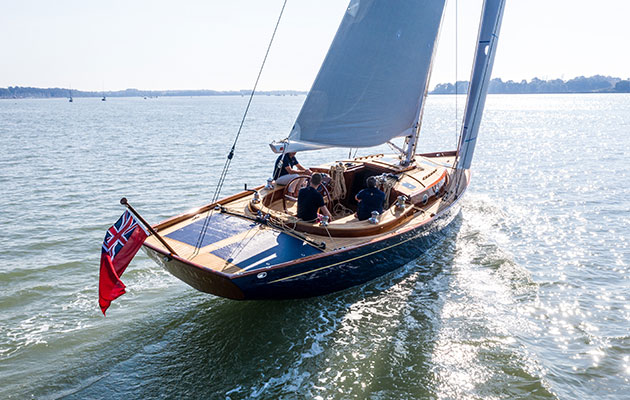
ON TEST: Spirit 44e – the sustainable future of sailing?
A wooden boat that blazes a trail for modern technology and sustainability sounds too good to be true. Theo Stocker…

First look: Southerly 42 – bluewater beauty
There are few high-end bluewater cruising yachts that can boast a draught of just 84cm (3ft). While this increases to…
One step too far
If I had one criticism of this otherwise spotless interior, it would be the number of little level changes that connect the spaces.
We counted 12 steps in total, besides the companionway.
While they maximise the volume, they also present a tripping risk.

The hull form includes a plumb bow to stretch waterline length, and carries its beam well aft, controlled by twin rudders. Credit: Brian Carlin
One of the reasons for these steps is clear: the saloon sole is raised somewhat in order to create space for the tankage beneath, as well as enjoy the views from the deckhouse windows.
And there, at least, the benefit is overwhelming, because you can easily inspect each tank, as well as the batteries and other equipment.
Custom joinery adapts the galley storage to your crockery and glassware.

The galley of the Oyster 495 is well laid out for use at sea
Standard is a four-burner hob and oven from GN Espace, side opening boat fridge plus an optional freezer and microwave.
Another highlight is the huge chart table.
There are those that scoff at the waste of space in a digital age, but anyone undertaking blue-water cruising knows the value of this space.

The saloon deckhouse leaves the foredeck clear for sail handling, lounging, or dinghy stowage. Credit: Morten Strauch
B&G instruments are the standard choice. The main interfaces are touchscreen displays that drive C-Zone digital switching , but key kit still features two-pole manual switches.
‘We wanted to introduce tech into the boat, but we had to make sure that if something breaks down mid-ocean you could fix it,’ explains Gibson.
Down steps aft, the owner’s cabin is clearly inspired by the big Oysters.

The engine compartment is well insulated and has ample space for a genset and other systems. Credit: Morten Strauch
The island bed measures 140cm across and features an elaborate fabric headboard that shows off the new styling to maximum effect.
There’s the option of a huge TV on the forward bulkhead, plus a vanity table and a sofa.
A luxurious ensuite heads features a separate shower, reached – you’ve guessed it – down another step.
The second cabin lies in the fo’c’sle and it runs to another good sized semi-island bed.

The boat remains a medium-heavy displacement cruiser, but the new hull shape adds extra performance. Credit: Richard Langdon
Having shared this space overnight with the photographer, I can attest to the comfort, and the natural light.
There is a third cabin to starboard with a pair of useful bunks, sharing the forward heads and shower. Finish quality is, as you’d expect, excellent.
In the end, Oyster has been ambitious in trying to squeeze in the features of its larger boats onto this design.
But it has been a successful project and, even as we hove in sight of Kiel’s green approaches, it was all too easy to imagine settling in and heeding the call of the high seas.
Verdict on the Oyster 495
New focus from Oyster and some modern hull design courtesy of Humphreys have given the Oyster 495 a modest performance boost and some welcome contemporary features.
However, she remains very true to Oyster’s keystone values of safety, seaworthiness and comfort. And in that sense, at least, she is not a radical boat.
Her layout, too, would be familiar to an Oyster 49 owner from 2001.

The Oyster 495 is built for serious long-distance cruising. Credit: Brian Carlin
There’s plenty of technology here – digital switching, plotters galore, good AV options and hydraulic sail controls. But it is not dressed up to be flashy.
The boat is solid, well-built and beautifully finished. She is easy to handle, capable and well organised.
Our only misgivings were about the less-than-easy halyard handling, and reliance on hydraulics for sail trim.
It’s all very neat, but is that really the priority for blue-water cruising?
As to whether she represents the world’s best 50ft blue-water yacht, time will tell, but with 16 boats sold off plan, some buyers clearly think so.
Would the Oyster 495 suit you and your crew?
Oysters are the stuff of dreams, and the new 495 is no exception.
If money were no object, and it needs not to be for this boat (our tricked-out test boat cost £1.6m ex-VAT or £1.92m inc VAT), then this is a vessel custom made to fulfil blue-water cruising hopes.
She would best suit a family with a steady flow of visiting friends, or a mix of older and younger kids.

The integral bowsprit on the Oyster 495 facilitates the setting of various offwind sails to maintain passage speeds. Credit: Brian Carlin
The disparity between the aft and fo’c’sle cabins rules out a project involving two couples.
She would also work well with a couple and some paid hands, although the ease of sail control and trim makes her perfectly viable for sailing solo or two-up.
There’s no reason that you couldn’t take the 495 up Britain’s rivers and estuaries, with her 2.28m draught and option for a 1.83m shoal keel.
But a boat of this capability demands to cover miles.
Sail round Britain , up to Svalbard , round the Mediterranean or around the world – the boat could undoubtedly handle it all with aplomb – but make sure you’re stretching her legs.
Solid, well-built and beautifully finished

10 Best Sailboat Brands (And Why)

There's no denying that sailors are certainly a passionate bunch. We’re so passionate about our boats that we always try going for the best sailboats. To make it a lot easier for you, here are the best sailboat brands.
Owning a sailboat is an indulgence that many of us only dream about but very few ever have the privilege of sailing the seas in what they can actually call their own.
While there's nothing wrong with renting a sailboat, the honor of owning one is certain what many sailors dream of.
With a perfectly crafted sailboat as company, gliding through the water, waves, and wind brings some sort of unmatched comfort and peace.
Add this to the fact that sailing takes you far away from the daily hustles and bustles that we've become accustomed to in our daily lives and you'll see why the life of sailing is very appealing to the masses.
But without a proper sailboat, all this fun and the good life of sailing are thrown out of the window.
Contrary to the widespread opinion, owning a sailboat isn't beyond anyone's reach. It's something that we can all achieve. But before getting into that, it's important to know some of the best sailboat brands.
The best sailboat brands will make your life as a sailor a lot easier and more fun. The best sailboat brands have, for decades if not centuries, mastered the art of woodworking. They've dedicated their skills and immense amount of their time to designing and manufacturing nothing but the best quality of sailboats in the industry.
So if you've been looking for the best sailboat brands from all over the world, you've come to the right place. We'll discuss the best of the best, something that will give you a perfect getaway from your normal life.
Table of contents
Must-Have Features for Your Sailboat
Before highlighting the best sailboat brands, it would be appropriate to jog your mind a little with some of the features that must be available in your sailboat.
Choosing a sailboat can sometimes be a matter of compromises. In other words, it's sometimes sensible to accept that a sailboat cannot have all the features that you desire.
As such, it's all about going with a sailboat that has the features that matter to you most.
For this reason, let's look at the most basic features that can make the difference in both safety and comfort while improving your sailing experience.
A Safe and Comfortable Sailing Cockpit
You'll most definitely be spending a huge amount of time in the cockpit. Whether you're keeping watch, trimming sails , helming, or just enjoying the scenery, there's no better place to do all these than from the cockpit. That being said, a good cockpit should have the following.
- Have a good depth for safety reasons and adequate drainage
- Should give you a quick and easy access to jammers, cleats, and other important parts of the winch system
- Should have a seat or seats that are about 35 cm high, 50 to 55 cm wide to provide ideal support
- The seats should be adjustable to offer maximum comfort and allow you to change your position
GPS Chartplotter
Use a GPS Chartplotter once and your sailing will never be the same without it. It not only allows you to map a course but is also a great way of ensuring that your sailboat exactly follows that course. It also gives you constant updates on ocean conditions, weather conditions , and potential hazards such as deadly currents and sandbars.
A GPS Chartplotter is also an important safety device that can help you in some very critical situations while out there on the water.
For instance, it has a man-overboard button that is essentially meant to allow you to receive coordinates of the exact location should someone fall off your boat.
Electric Winch System
This is an amazing addition to any sailboat. It allows you to sheet a jib even in high and strong winds with a simple press of a button. It also gives you the chance of trimming a mainsail easily while still carry out other essential tasks in the sailboat.
An electric winch system can be of great importance, especially if you're short on crew. This is because it can free up some crew members to carry other important tasks. In other words, it can make duties that would otherwise require more crew members a lot easier.
More importantly, an electric winch system can maintain safety even in the roughest of conditions, thereby preventing you and your crew from getting injured. In essence, an electric winch system will make your sailing a lot safer, less stressful, and more enjoyable.
Reverse Osmosis Watermaker
This is a very valuable accessory, especially if you're going on long sea voyages. You can spend days on end without drinking clean and safe water.
As the name suggests, you can use this accessory to turn seawater into purified drinking water. It uses the reverse osmosis method that's essential not only in removing bacteria and parasites from the water but also in turning the water into purified and safe drinking water.
Even though this device is pricey, it's a great way to mitigate the over-reliance on huge water tanks. All you have to do is to ensure that it's properly maintained and you'll have an endless streak of safe drinking water no matter where you are.
Wide and Clutter-free Deck
While the deck is often an overlooked feature of a sailboat, it can be the difference between a great sailing experience and a stressful one. In essence, the deck of a sailboat should be wide enough and clutter-free.
This is significant as it can enable you to quickly access different parts of your sailboat with hindrance or getting tangled. As you can see, this is particularly important in improving safety and reducing stress.
With that in mind, make sure that the deck is organized in such a way that you can have easy access to sails, masts, and winches.
You should, therefore, avoid sailboats with decks that are designed in such a way that you have to climb on top of the cabin just to access these features. Needless to say, this can be quite unstable and very dangerous especially when conditions are rough.
The Best Sailboat Brands and Why
1. hallberg-rassy.
Hallberg-Rassy is a Swedish yacht maker that's very well-known in the blue water cruising circles for making some of the highest quality and sturdiest sailboats. For many sailors, this is the number one sailboat brand as it offers absolute comfort, utmost safety, and good and easy handling.
This brand is not only synonymous with sturdy construction but you won't worry getting soaking wet while out there on the water. This is because it has a well-protected deck and cockpit, finished with nice woodwork, and has a powerful engine with a big tankage just to ensure that you can go on long voyages.
When designing its sailboats, this brand has made it a norm to add some features that stand out from the rest. For instance, the bowsprit is an integral feature that makes sailing a Hallberg-Rassy quite easy and much enjoyable. This is because it grants easy access to and from the deck. Its electric anchor winches facilitate smooth maneuvering. Even more, its large steering wheels makes it much easier to control the boat even in the roughest of conditions. In essence, this brand has features that provide good control and an extra sense of safety.
Although this brand has evolved over the years, you'll easily recognize it even from a distance. And why is this? A Hallberg-Rassy never goes out of style. This is a unique sailboat brand that has always stayed true to its principles and concept. No matter which part of the world you go, Hallberg-Rassy will remain the undisputed king of blue water cruising.
2. Nautor's Swan
For over 50 years, Nautor's Swan has endlessly raised the sailing levels by designing and manufacturing new sailboat models that not only push the boundaries but also meet that many requirements and demands of sailors across the world. Thanks to its wide range of seaworthy, timeless, elegant, and highly-performing sailboats, the Nautor's Swan remains one of the best if not the best sailboat makers in the world.
Based in Jakobstad, Finland, this brand has severally set the industry standard with its speedy and sleek models such as the Swan 48, Swan 65, Swan 98, Swan 78, and Swan 120. These models have one thing in common: they never compromise on safety. As a brand that puts safety first, it ensures that its models are made of foam-cored glass fiber and reinforced both with carbon-fiber and epoxy. In essence, Nautor's Swan is widely revered for its unmatched seafaring and safety records.
Additionally, Nautor's Swan models are incredibly responsive. You can easily tell this just by the feel of the wheel. This brand has models that will gracefully slice through the biggest of waves with ease. That's not all; the interior of these models that are very comfortable even when the going gets tough. This is, without a doubt, a brand that strives to create self-contained worlds with each model.
3. Beneteau
This is perhaps the most selling sailboat brand in the world. For over a century now, this brand has based its models in a combination of simplicity and performance. This is a brand that will serve you just right across all latitudes and in all circumstances. Whether you prefer the Oceanis Yacht 62 or the Figaro Beneteau 3, this brand will never let you down on all fronts.
This brand revolves around a simple concept of creating a link around the world. From the deck space to its design and light, this brand does everything possible not just to uniformly transform life at sea but also to open doors to new horizons in a very luxurious yet practical way. Its models are designed with clear deck plans, stable hulls, simplified maneuvering and interior materials and equipment that can be easily personalized.
Whether you're looking for a racing sailboat or something that's designed to explore and enjoy the world in the company of friends and family, Beneteau is a true combination of sensations and simplicity. This is a brand that brings to the seas fun, simplicity, smartness, toughness, safety, intuitiveness, as well as dazzling reinvention.
4. Amel Yachts
Based on the ethos of designing and manufacturing comfortable, robust, and easy-to-handle boats, this French brand has, for over five decades, offered sailors and other sailing enthusiasts the perfect opportunity to explore the seas with the utmost quality, comfort, and more importantly, safety.
Using 100% French know-how, this brand has brought to the sailing world some of the best boats such as the Santorini, the Mango, the Super Maramu, and the Maramu. We would be doing this brand total injustice if we said that they're distinctive. Truth be told, there's nothing comparable to an Amel model. Well Amel was and still is, the ultimate standard by which other sailboat models are measured.
From items such as electric winches and furling, to generators, Watermaker , and washing machine down to the simplest of items such as towels. Spare filters, bathrobes, deck brush, and a boat safe, the Amel is in reality with what the real life of a sailor is and should be.
Although some may say that Amel still has room for improvement in terms of specifications and personalization, it cannot be denied that the Amel is a serious brand that designs and manufactures complete boats. With this brand, you'll be guaranteed of a higher degree of reliability, safety, and an edge of fun while out there on the water.
5. Hinckley Yachts
Based in Maine, United States, Hinckley Yachts is a brand that has been building robust, luxury, and safe sailboats for more than 90 years now. In its sailboat class, you'll find several sailboats that have classic shapes, inner strength, dramatic lines, and features that are absolutely essential in dealing with the challenges of the North Atlantic.
This brand has been successful in integrating impeccable craftsmanship with new technologies to ensure that their models always stand out while articulating advanced sailing practices, timeless aesthetic, robust construction, and the utmost safety. Whether you choose the Bermuda 50, the Sou'wester 53 or any model for that matter, you'll never be short of advanced performance based on the best design and technology.
In terms of features, this brand provides sailboat models with modern performance hulls. These hulls are constructed with inner layers of carbon, outer layers of Kevlar, and are aligned with computer-designed load paths. Every feature is designed without compromising comfort.
To this end, this brand offers you a perfect combination of both fun and sail. This brand offers more than just sailing. Instead, it offers a unique sailing experience that's combined with the pure joys of sailing in the blue waters with an ease of ownership and maneuverability.
6. Oyster Yachts
If you've been looking for luxury more than anything else, Oyster Yachts provides you with numerous solutions. This British brand is widely known for manufacturing a wide range of luxury cruising sailing yachts. Its sailboats are among the finest in the world and are immensely capable of taking you to some of the far-flung places in the world without having to worry about high winds and hellish waves.
Whether you choose the iconic Oyster 565 or the immense Oyster 595 you never fall short of experiencing the new world like never before. These are models that will enable you to own your adventure, choose your destination, set your courses, pick your anchorage, and stay safe at all times. If you want to hold the wheel and pull the sail while feeling the tang of salt spray on your face, Oyster Yachts is the way to go.
This is, unquestionably, a brand that's meant for you if you want to explore the seas in comfort, luxury and utmost safety. From craftsmanship, sailboat design, to hull, deck, and keel configurations, everything is designed to allow you to circumnavigate the world in comfort, elegance, and style.
7. Tartan Yachts
Based in Fairport Harbor, Ohio, there's arguably no better to begin your sailing adventures than with a sailboat designed and manufactured by Tartan Yachts. With several award-winning designs and construction, this brand is widely known for providing easy handling, great performance, and an ultimately stable platform.
This brand always strives to deliver a unique and the best possible experience to every sailor. As a brand, Tartan fully understands that every sailor has his/her unique sailing needs. As such every component of their models is designed with engineering levels that guarantee optimum performance, excellent on-deck visibility, and luxurious interior.
From the Tartan 5300, the Tartan 4300, the Tartan 345 to the New 365 and the Fantail, this brand makes it a priority to ensure that its models are among the strongest, lightest, and more importantly, the safest in the sailing industry. In essence, this brand can be ideal if you appreciate performance. It has rewarding sailing features both in narrow water lines and wider passages. Add this to its easy handling and you'll have a top-notch performer in virtually every condition.
8. Catalina Yachts
As one of the most popular boat manufacturers in the world, this American brand is widely revered for building the sturdiest boats that can hold up perfectly well in real-world conditions. These are generally family-oriented boats that are intelligently designed to ensure that your entire family can have fun out there on the water.
Some of the models include the cruiser series such as the Catalina 315, the Catalina 385, the Catalina 425 while the sport series include the Catalina 12.5 Expo, the Catalina 16.5, and the Catalina 14.2 Expo. As the current winner of the "Boat of the Year" Cruising World, you'll rarely go wrong with a Catalina model.
It offers a wide range of sailboat sizes that suits your lifestyle. This brand makes it a priority to ensure that all their models are not only safe but offer the best ownership and sailing experience. If anything, this brand is widely known to have one of the most excellent resale values in the sailing industry.
9. Island Packet Yachts
From the IP 525, the IP 439 to the IP 379, the Island Packet Yachts is a brand that encourages its customers not to keep the world waiting. This brand is meant for sailors who want to explore the world in utmost comfort and safety.
The first thing you'll notice in an IP sailboat is its large aft deck. This is not only perfect for sunbathing but can also serve you well if you want an impromptu dinner with friends and family while out there on the water. The living space is also large enough to carry most of your belongings, which is an added advantage especially if you've been planning to spend longer periods in the seas.
With modern evolution and refinement, as well as proven features, this brand is known to offer sailors maximum comfort, luxury, and safety. You'll have better access to the cockpit, have enough space, and are excellently designed to provide superior seafaring and the best features to enable you to spend extended periods when cruising.

10. Sparkman & Stephens
For more than 90 years, Sparkman & Stephens has been at the forefront of the belief that sailboat excellence goes beyond hull lines and deck plans. Instead, this brand believes in excellent naval architecture, innovation, sophistication, and beauty. This is a brand that has laid the foundation of sailboat as a sport not just in America but all over the world.
These models have graced the world for decades and bring immense pleasure to their owners in terms of innovation, performance, and excellence. Though rooted in tradition, the brand has pushed sophistication, technology, and sailing experience to a whole new level. You'll be a proud owner of the Sparkman & Stephens model.
There you have it; these are the best sailboat brands in the world. Although there are several other sailboat brands to choose from, the-above described brands stand shoulder above others in terms of quality, safety, performances and luxury.
Hopefully, you're at a much better place when it comes to choosing a sailboat that suits your lifestyle, needs, and budget .
Happy sailing!
Related Articles
10 Best Sailboats To Live In
Common Issues With Hallberg-Rassy Sailboats
Common Issues With Catalina Yacht Sailboats
Common Issues With Island Packet Yacht Sailboats
Daniel Wade
I've personally had thousands of questions about sailing and sailboats over the years. As I learn and experience sailing, and the community, I share the answers that work and make sense to me, here on Life of Sailing.
by this author
Best Sailboats

Most Recent

What Does "Sailing By The Lee" Mean?
October 3, 2023

The Best Sailing Schools And Programs: Reviews & Ratings
September 26, 2023
Important Legal Info
Lifeofsailing.com is a participant in the Amazon Services LLC Associates Program, an affiliate advertising program designed to provide a means for sites to earn advertising fees by advertising and linking to Amazon. This site also participates in other affiliate programs and is compensated for referring traffic and business to these companies.
Similar Posts

Affordable Sailboats You Can Build at Home
September 13, 2023

Best Small Sailboats With Standing Headroom
December 28, 2023

Best Bluewater Sailboats Under $50K
Popular posts.

Best Liveaboard Catamaran Sailboats

Can a Novice Sail Around the World?
Elizabeth O'Malley
June 15, 2022

4 Best Electric Outboard Motors

How Long Did It Take The Vikings To Sail To England?

7 Best Places To Liveaboard A Sailboat
December 20, 2023

9 Best Trailerable Sailboats
Get the best sailing content.
Top Rated Posts
© 2024 Life of Sailing Email: [email protected] Address: 11816 Inwood Rd #3024 Dallas, TX 75244 Disclaimer Privacy Policy
Yachting World
- Digital Edition

The remarkable Oyster 675 on test – making a splash with a powerful new look
- Toby Hodges
- January 21, 2017
There may be new styling and options galore but the 675 is still assuredly an Oyster. Toby hodges reports.
However, what really sets the 675 and 745 apart is the range of options available. This 675 is the first Oyster to offer a forward master cabin as a standard option and there is a wide variety of internal layouts available. Below the waterline, twin rudders reduce draught sufficiently to enable Oyster to offer a ‘super shoal’ centreboard version, while on deck a cutter rig can be specified in place of the single blade jib.
All models bigger than the 675 are now offered with conventional sloping transoms or extended vertical transoms as standard, while smaller models have been fitted with the extension on request. Other than create a very different look, the extended version doubles the size of the lazarette stowage and creates the option for a tender garage – another first for Oyster.
It is rare for an owner to know exactly what they want in a yacht of this size, so having all these options designed in is a way of helping the owner and the yard to create a personalised yacht. “We can’t change the main structural bulkheads but there is enough latitude within the design by Rob [Humphreys] to offer a variety of layouts,” Oyster’s CEO David Tydeman explained. “We can’t take it to extremes but we’re a hell of a lot more flexible than we used to be.”
Other than her sportier shape and style, first impressions of the 675 might not be that dissimilar to the 625 (as. Indeed it has a very similar four-cabin layout, albeit without needing the walk-through galley of the 625. But the 675 is £500,000 more expensive than the 625, which sounds like a lot for an extra 3ft of length. But you only need small gains in length to create significant extra volume.
In comparison to the 625 and the 655, the 675 has more volume in all three dimensions, with higher topsides, more beam and more volume in the bow. This creates sufficient space for a forward master cabin with en-suite heads, or a large guest cabin in the bow. Depending on the choices made forward, the aft cabin space can remain intact or be divided into two.
Oyster considers this new 675 to be about the limit in size an owner can still operate a yacht without crew, yet concedes that a temporary paid hand may still be advisable to keep the yacht suitably maintained. But the simultaneous launch of another new design, the 745, is for those who will sail with crew.
“Most of our big boat success has been through loyalty,” says Tydeman, referring to the 72ft-88ft bracket. It is interesting therefore that two thirds of Oyster owners in the 62ft-72ft bracket are new to the brand. The owners of the test boat Babiana are very capable ex-Swan 45 sailors, for example, who want to sail themselves and use an occasional paid hand – exactly the sort of use for which the boat is designed.

The Oyster 675 showing her power. An extended counter stern can be specified for even more stowage and deck space.
Smooth running
Something happens when you leave port on a quality-built superyacht: you don’t really hear anything. If you are below decks you may not even notice you are moving. I had a similar experience on the 675. There was no big fanfare and no propulsion vibration.
Where we tested: The Solent Wind: 5-13 knots over calm sea. window._taboolaSlots=window._taboolaSlots||[];window._taboolaSlots.push({"mode":"thumbnails-a-mid","container":"taboola-mid-article","placement":"Mid Article","target_type":"mix"}); Model: hull no 1, Babiana, with conventional transom and owner’s cabin aft
Insulation, together with the peace it can bring, is especially important for a centre-cockpit boat, on which owners tend to live aboard for long periods. Observing the yachts in build helps you appreciate how Oyster achieves this effect. The plywood for example includes an insulation sandwich within the layers of ply, and every joint is sealed with glassfibre to make it airtight and boost sound insulation. The result is remarkably relaxing.

The seats are luxurious and the view over the coachroof is good but the steering position is quite far inboard.
It’s perhaps customary to see modern large Oysters sporting carbon rigs and fully battened sails, so it was slightly surprising to find a more cruising-friendly Spectra mainsail unfurl from Babiana ’s alloy mast. But I was told that 90 per cent of 655s were fitted with an in-mast solution – a choice that is indicative of a hands-on owner who wants to cruise short-handed.
The test boat was only three-quarters commissioned, the rig stepped just in time for the yacht to make its world debut at Southampton Boat Show in September. Our trial was more of a snapshot on the day after the show closed. The boat then left directly for Ipswich, where the rig was due to be removed before she is transported this winter to the Düsseldorf Boat Show.
So she wasn’t exactly ‘tuned’, but during our initial fetch that turned into a beat down Southampton Water in 10 knots of breeze, I quickly learnt that she is more than capable of creating a good first impression. In 7 to 9 knots true we matched the breeze with sails slightly freed, and when the wind speed hit double figures I could feel more power as the boat heeled. “We’ve gone wider aft with more form stability than before,” Rob Humphreys commented, while also sailing her for the first time.

The sumptuous main saloon featuring three vertical forward-facing portlights. This image also shows the rather large gap between the table and the port bunk.
We tacked out through the main channel around the Brambles Bank, the blade jib making the 38-tonne yacht nimble enough to be thrown quickly through the tacks. The use of a blade rather than Oyster’s conventional overlapping headsail helps her point and also keeps the clew forward and well away from the guest cockpit. The jib is tacked to an electric Reckmann furler and there is a hydraulically tensioned removable inner stormstay fitted as standard.
The 675 felt nicely balanced. The twin spade rudders, bonded to composite rudder stocks, ensure a light feel on the wheel without losing that telltale nudge when they load up. However, once the breeze dropped back below 7 knots, or when we were sailing at a deeper angle, the helm became neutral.
When the wind does disappear, the 180hp Volvo engine driving a Bruntons four-blade folding prop proved efficient (7 knots at 1,500rpm) and there are vast fuel tanks (1,900lt) for long-distance cruising.
The helm position is a little high and inboard for my liking. To leeward, for instance, I found myself straining out to see the telltales and there is no comfortable position to perch out or stand over the high coaming. But there is a good, clear view forward over that lower-profile coachroof and the double helm seats each side provide a luxurious place from which to command a watch.

The optional vertical portlights in the aft master suite offer a fine view out.
The jib sheet lead is cleverly designed to run aft along the base of the long coachroof windows and up through a moulded scoop in the coamings directly to the primaries each side. The boom ends relatively far aft with a single point mainsheet led straight to an aft winch, negating the need for a traveller. The primary and runner/spinnaker winches are mounted aft of the helms, to keep the cockpit clear for guest use.
The cockpit forward of the twin binnacles is suitably resplendent – ideal for guests wishing to remain clear of the sailing systems. The beamy aft deck extends even further if a counter stern is chosen and the excellent quarter benches are large enough to seat three each side.
- 1. Introduction
- 2. Accommodation: Where to sleep?

The global authority in superyachting
- NEWSLETTERS
- Yachts Home
- The Superyacht Directory
- Yacht Reports
- Brokerage News
- The largest yachts in the world
- The Register
- Yacht Advice
- Yacht Design
- 12m to 24m yachts
- Monaco Yacht Show
- Builder Directory
- Designer Directory
- Interior Design Directory
- Naval Architect Directory
- Yachts for sale home
- Motor yachts
- Sailing yachts
- Explorer yachts
- Classic yachts
- Sale Broker Directory
- Charter Home
- Yachts for Charter
- Charter Destinations
- Charter Broker Directory
- Destinations Home
- Mediterranean
- South Pacific
- Rest of the World
- Boat Life Home
- Owners' Experiences
- Conservation and Philanthropy
- Interiors Suppliers
- Owners' Club
- Captains' Club
- BOAT Showcase
- Boat Presents
- Events Home
- World Superyacht Awards
- Superyacht Design Festival
- Design and Innovation Awards
- Young Designer of the Year Award
- Artistry and Craft Awards
- Explorer Yachts Summit
- Ocean Talks
- The Ocean Awards
- BOAT Connect
- Between the bays
- Golf Invitational
- BOATPro Home
- Superyacht Insight
- Global Order Book
- Premium Content
- Product Features
- Testimonials
- Pricing Plan
- Tenders & Equipment

Maegan: The Oyster yacht built for bluewater cruising
“I have a very interesting statistic,” starts David Tydeman, CEO of Oyster Yachts . “We looked back over the last 300 boats we’ve built and found that less than 20 per cent had a mooring or a berth. They were mobile. I love that: that’s what Oyster is about. We build boats for sailing, not for marina or regatta glory.”
There’s a sense of irony in his last statement, as Maegan has had a successful racing career so far. In 2015, she finished her first bout of racing at the Loro Piana Superyacht Regatta in Porto Cervo, coming sixth in her class; just a week later the same yacht topped her class at the Superyacht Cup in Palma; and in March 2016 she finished second in her class at the Loro Piana Caribbean Superyacht Regatta .
In its 42-year history, Oyster has garnered a reputation for building solid, high-quality bluewater cruisers, at home on the high seas and often encountered in the most remote destinations . I am quite surprised, then, when we head out into a near-windless Med for a trial sail and discover that far from being a chunky, heavy, ocean thoroughbred, this modern 24 metre is light, nimble and – when it comes to sailing – remarkably easily driven.
With the breeze hovering between 2.5 and four knots, we hoist the in-boom furled main and unroll the blade jib, and with a gentle hand on the wheel Maegan moves. At 30 degrees apparent, we’re clocking close to five knots — more than a knot above true wind — and it’s a similar story when we bear away and try the furling Code 0. With the apparent just forward of 90 degrees, she ticks along at a knot above true wind.
She’s not just a light airs special, either. “We’ve had her surfing at 16 knots, on the passage past Portugal, without much effort,” beams Maegan ’s captain James Micklem. “And she really enjoys 10 to 12 knots of wind.”
A glance around the aft deck area shows the thought that has gone into Maegan ’s design and layout. Her winches are all positioned aft of the steering pedestals and her two-to-one mainsheet runs under the deck from the end of the boom. The blade jib forward means the jib tracks are kept to the aft end of the foredeck and her sheets run close to the coachroof coamings.
Coupled with outboard chainplates, the side decks on Maegan are blissfully clear of obstructions, while the large guest cockpit is safely away from lines, sheets and sailing controls. Runners and an inner forestay add security for heavy weather sailing, but both can be removed. It all adds up to a yacht that is both easy to handle, yet safe for guests.
Maegan ’s high topsides mean that there are no steps fore or aft on deck, and her foredeck has been kept clear through an optional forced-air system for the interior, so foredeck dorades are a thing of the past. Removable dinghy chocks can seat a 4.5 metre tender forward — easily launched using a pole system on the mast — while with the tender gone a large lounging deck-space forward complements the broad, flat aft-deck area. The guest cockpit itself features a generous teak folding table complete with built-in fridge, while a large sliding hatch leads below.
On descending the steps, the first thing you notice is Maegan ’s huge lower saloon. Generous seating either side invites you to relax, while the three distinctive vertical hull-ports either side are at exactly the right height to enjoy a water-to-horizon view.
The 825 can be specified with different saloon configurations, including a raised saloon and a deck saloon, both of which lose the hull ports but which offer seated views through the coachroof windows. You also gain more space for the engine room, which is below the saloon sole, although even the crawl space on Maegan is less of a disadvantage than you might think.
“The engine room layout is much improved over the 82,” says Micklem. “It’s more accessible, and there’s more in one place so you don’t have to go lifting guest floors to access pumps – everything is contained in one area.”
For Maegan , forward of the saloon lies a chart table and the central monitoring system. The longitudinal galley links the guest areas with the crew space, and the galley itself is well equipped for long-distance cruising — although any number of configurations can be specified.
There is a fourth guest double cabin, although as Maegan runs with three crew this is used as a very generous captain’s cabin. The crew space includes a small laundry area, twin cabin for crew, head-cum-wet room and a watertight hatch through to a large foredeck sail locker.
The owner and guest accommodation is set aft, with the full-beam owner’s double cabin towards the stern. The positioning is deliberate: if you’re a sailing yacht owner who likes passage-making rather than flying out to the boat post-delivery, this is the most comfortable area. Maegan ’s seaworthy touches are evident in the addition of hooks and eyes in the deckhead for lee cloths.
The master en suite is set to port and the cabin layout itself can be easily customised according to desires. Take away the sofa and a desk can be put in its place, or another wardrobe can replace the vanity unit. In fact, the entire interior arrangement can be customised and reconfigured – one 825 has had the entire aft area set out as a single, large, owner’s apartment. Another has replaced the guest double with the galley.
As Maegan stands, an en suite guest double to starboard and an en suite twin cabin to port – which converts to a double – complete the guest quarters.
The décor on Maegan is light and contemporary, featuring limed oak and large expanses of white panelling. A walnut detail runs here and there, linking the palette with the walnut floor. It’s an incredibly calm space to be in, clean but not sterile, airy but not clinical.
As we sit back on the dock in Porto Cervo, one of Maegan ’s siblings – an Oyster 885 called Karibou – slides into the berth next door. It begs the question: why, in the new line-up, did Oyster design two yachts so close in size, separated by just two metres? “We started with the 885 in early 2010, with the design concept,” Tydeman explains, “and the first one hit the water in 2012.
“We committed to the 825 about a year after the design of the 885, so in 2011. We learnt from the 100 and the 125 that as you step over the 24 metre loadline rule, you have to provide much more space for the crew if you want to be commercially coded,” he continues. “So I sat with designer Rob Humphreys and we decided to start with a boat just an inch underneath that limit – the 885 was designed to have two crew cabins and four guest cabins.
“But the decision to go with the 825 was a brave one – could we afford to invest in two boats that were only [two metres in length] apart? We decided there was a market, as one is a six-cabin boat, and the other is a five-cabin boat. Also, 80 feet (24 metres) is the smallest size you can sensibly and socially separate crew and owner.” It is a gamble that has paid off: Oyster has sold six each of the two models so far.
So how about that performance aspect? “We chase performance, but in a different dimension to racing in a regatta,” Tydeman continues. “We measure performance in terms of how far you can sail without having to refill the water and fuel tanks. If you look at our tankage we have twice the capacity across the board of similar yachts, and we also define performance in terms of quietness, vibration and the ability to enjoy long-distance cruising at a sustainable speed.”
As a natural evolution of the Oyster 82, the 825 has already been proven to be some 10 per cent faster. Moreover, that tankage — and the fact that the 825 drinks just 12 to 14 litres of fuel per hour at cruising speed and with everything running — means Maegan has transatlantic range under motor at nine knots, and with the throttles eased back she can also boast potential transpacific range if motor-sailing.
With such space in her interior and flexibility in her configuration — you really can customise the yacht to your preferred layout and equipment — coupled with sailing performance that can handle everything from zephyrs to the worst the oceans can muster, Tydeman’s opening statistic starts to make sense.
Why would anyone, with a yacht like Maegan , choose to stay in a marina? Eighty per cent of the last 300 Oyster owners agree. After all, the world is your oyster – and the Oyster 825 is a real pearl.
First published in the August 2015 edition of Boat International
More about this yacht
More stories, most recent, from our partners, sponsored listings.

Sailing a Rolex: Oyster Yachts 575 Review
- October 6th, 2017
- Sailing Yacht
When I was opening the door to the balcony of my appartement in Cannes some weeks ago and stepped out to the large patio – I think – I was one of the few lucky guys being able to enjoy this one million dollar view over the yacht harbour of Cannes, called Le Vieux Port. During Cannes Yachting Festival this is the epicentre of yachting in Europe the least. Moreso, I wasn´t just lucky to being able to look directly down on the nicest yachts on earth, my balcony was just above one of the most respected brands in yachting: Oyster Yachts of Ipswich, United Kingdom.

So whilst having my morning coffee I was standing there, watched the sun rising over La Croisette street at the waterfront and admired the lines of the two Oyster yachts moored directly under my windows: The Oyster 575 and her bigger sister, the Oyster 745. I know, this magazine is called NO FRILLS SAILING and I would say an Oyster is the farthest away from being a “no frills” boat, but I couldn´t help myself, I had to board one and explore her! In the end, it took me three attempts in three days in a row to persuade the Oyster staff to let me take the pictures and go inside this dream yacht. Here´s what I discovered …
The cockpit of an Oyster 575 sailing yacht
She is a huge boat, even the smaller 18 meter yacht moored next to her awesomely bigger sister ship. Entering her stern area via gangboard (operated by an hydraulic system) is a great feeling as one will stand directly on the master cabin´s roof. There are two large hatches which can be opened and used for ventilation and as escape hatches too, two dorade ventilators and the traveller system for the main sail. Let´s enter the cockpit …

… which is – surprisingly – a kind of a tight issue. The center cockpit configuration (as with all Oyster yachts) offers not the space I was expecting when looking at the boat from afar. In reality there´s enough space for one person of course, but I found it quite tricky to fit myself to the cockpit area. One reason may be the double steering wheel setup on the 575 which I find a bit overdisporportionate: The double steering eats away the space of the center cockpit as each steering wheel also comes with a huge console. I guess a single steering wheel with a central steering unit would have done it here (I will later board the Hallberg Rassy 64, a sufficiently larger boat of course and even this yachts bears a single steering cockpit and does this in a perfect manner).

Speaking of push button sailing, the Oyster is no exception. Large winches all over the place: The main sheeting is led abaft to a bigger mainsheet winch and the traveller sheets go on a smaller winch directly on the master cabin roof, the main Genoa winches (big guys for sure!) are a bit out of reach from behind the wheels, secondary winches could be reached from the wheel by hand. But on this Oyster yacht there´s no need to pull the cranks whatsoever as any of the winches are electric ones operated with ease from the big control panels in front of each steering wheel.

The Oyster 575 also bears a classic main sheet traveller system mounted behind the cockpit. These are the only winches which could be operated without any problems by the sailor from his steering position in the cockpit in case of electric shutdown or jamming of the winching system. All in all, I must admit, I found the Oyster´s cockpit layout not very convincing from my point of view in terms of single handed sailing without electric aides. The Genoa winches could only be operated from within the guest´s area in the somewhat narrow cockpit, it´s a long squeezing way from behind the wheels to the Genoa winches. Two wheels is – even on this 57 foot yacht – a bit exaggerated in my eyes. In terms of layout, the Oyster guys in Ipswich can do a better job on this one, I guess, there are much better thought through layouts in yachts available (for example on this fine yacht ).
The signature design of an Oyster yacht
So what is it that makes virtually everyone in the marina turn their heads and whisper in awe “There´s an Oyster coming in …!” when one of these yachts enters the port? What is so unique about these yachts turning almost every sailor´s eyes wet when speaking of an Oyster yacht? As a marketing pro in my “real life” I know that a product needs a unique signature – mostly a matter of design – that will set this product apart from all the others. On the Oyster yacht this design feature surely is her large, nicely carved and well-designed big deck saloon windows and the large three vertical porthole windows in the hull. It is the most recognizable Oyster design feature whatsoever – and “my” 575 also bears these.
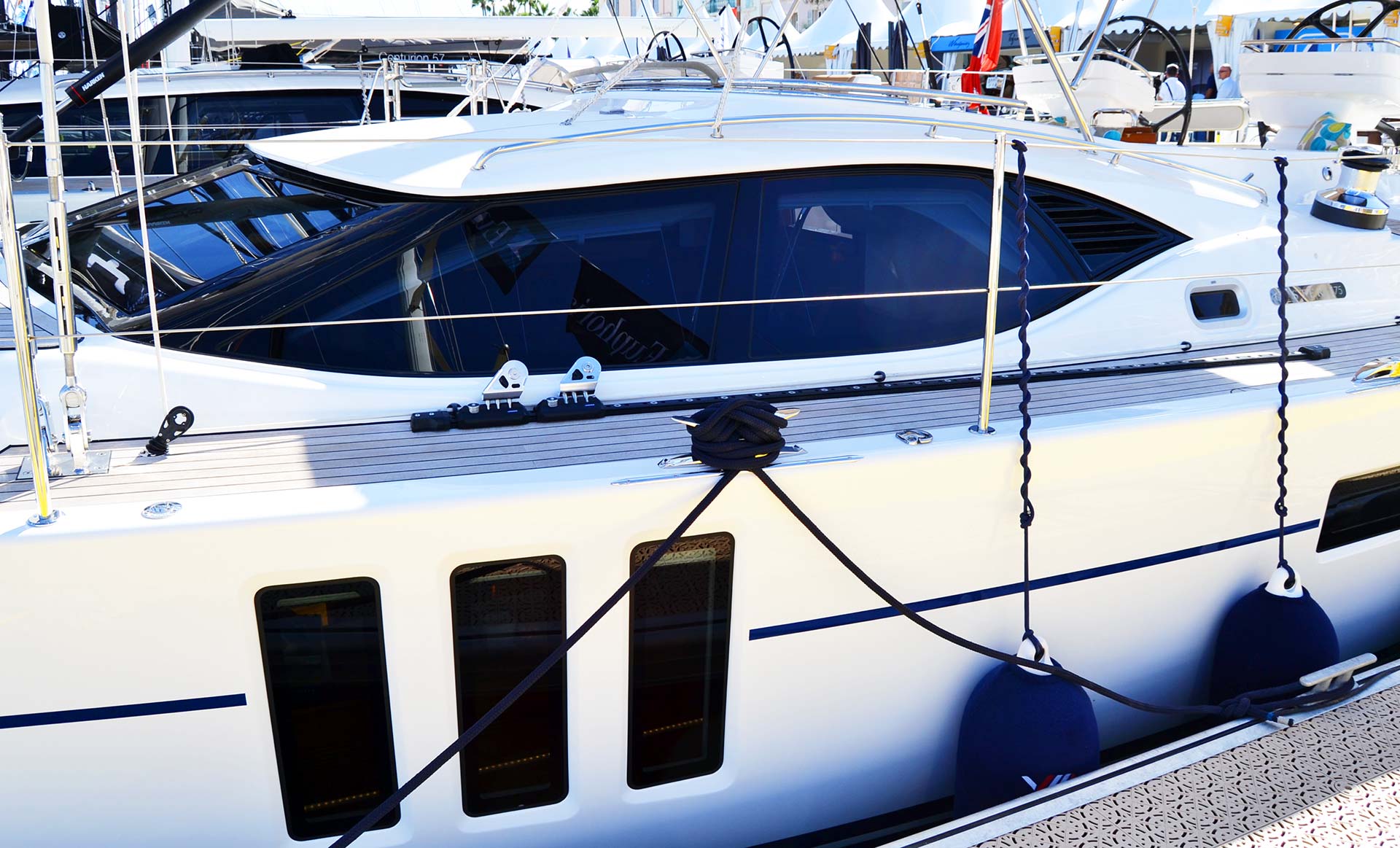
I must admit, this is something that really turns me on. The cat-like large deck saloon windows are of such a beauty that it almost reminds me of a classic, yet modern, sports car. The windows embody speed and luxury at the same time yet these windows have been grown to be the synonym for perfect deck saloon design in yachting. Moreso, I love the three vertical porthole windows in the hull which will finally set apart and Oyster yacht from each and every single yacht brand in the world. By the way, it´s a shame that Oyster will offer these windows only beginning with the 575 – the smallest Oyster, the 46 foot Oyster 454 with an “entry-level” price tag of just around one million Euros does not bear this nice feature.

On the 575 and all the other Oyster yachts, the three vertical windows aren´t just design features for sure. Standing in the large saloon of this boat, I instantly and first of all take a look at the effect these three porthole windows create in the interior – and I love it! In fact we are moored closely to the bigger Oster and therefore cannot fully enjoy the effect of those three porthole windows, but I can imagine that having those big portholes near the surface of the water will create splendid views both when underway and seeing (partially submerged) the Ocean flowing by as well as mooring somewhere in a nice bay with a view onto the distant waterfront. Just awesome!

Where on other yachts there is a large wooden wall covered all over with blank timber, faux leather or at least stowage, on the Oyster we have a huge area of windows creating a unique feeling in this awesomely big saloon. By standing in this boat´s inside and seeing this effect first hand I instantly want to cast off and get underway just to experience these effects on my own. It must be something very special looking at the world outside through these windows. Unparalleled on any other yacht available.
Luxurious sailing on an Oyster yacht
Well, of course the Oyster 575 and all of her sisters are luxurious sailing yachts. Designed by Robert Humphreys their hulls promise to be sturdy, stable and well-built oceangoing circumnavigation-capable boats but with weighing in more than a ton with every meter of ship length these yachts aren´t made to go fast. They simply aren´t meant to go fast: I guess, if you can afford one of these you will have all the time in the world to reach B from A. Moreover, I could imagine that speed isn´t one of the most prominent features on your to-do-list as every day aboard this dream boat is pure treat and one wouldn´t want to let this end so soon.

I love the interior fitting, the design, the colours and the choice of materials on this Oyster very, very much! It´s a traditional center cockpit yacht internal layout with a large saloon in the middle of the yacht, a large owner´s cabin in the stern and two front cabins with heads and staterooms attached. The saloon is dominated by a large U-settee grouped around a super big dining table. The cushions are so thick, superbly stuffed with best foam material, covered in white leather – it is pure heaven letting one sink down into this sofa, so cozy, so unbelievable nice that you don´t want to get up anymore. I don´t want to imagine what a spill of red wine or a single breakfast with Nutella by my children would make with this interior fitting over the course of one week sailing … but I guess small children are not expected to be guests on board here.

Vis-à-vis the settee is a 4-person sofa on the starboard side. Again, large, well-made cushion, very cozy and inviting to sit down here with a Mojito, crossing one´s legs and having a nice conversation sitting in front of those gorgeous three vertical windows offering an unparalleled view outside. I loved the varnished bulkhead – I loved all of the woodworks inside the Oyster for sure – for being very clean, solid and almost classic in design. The figure pattern in the wood is arranged horizontally (instead of vertically on other yachts). This creates the impression of the saloon of being wider and more voluminous than it actually is but this is an effect barely needed: The saloon can easily turned into a dancing hall for sure.
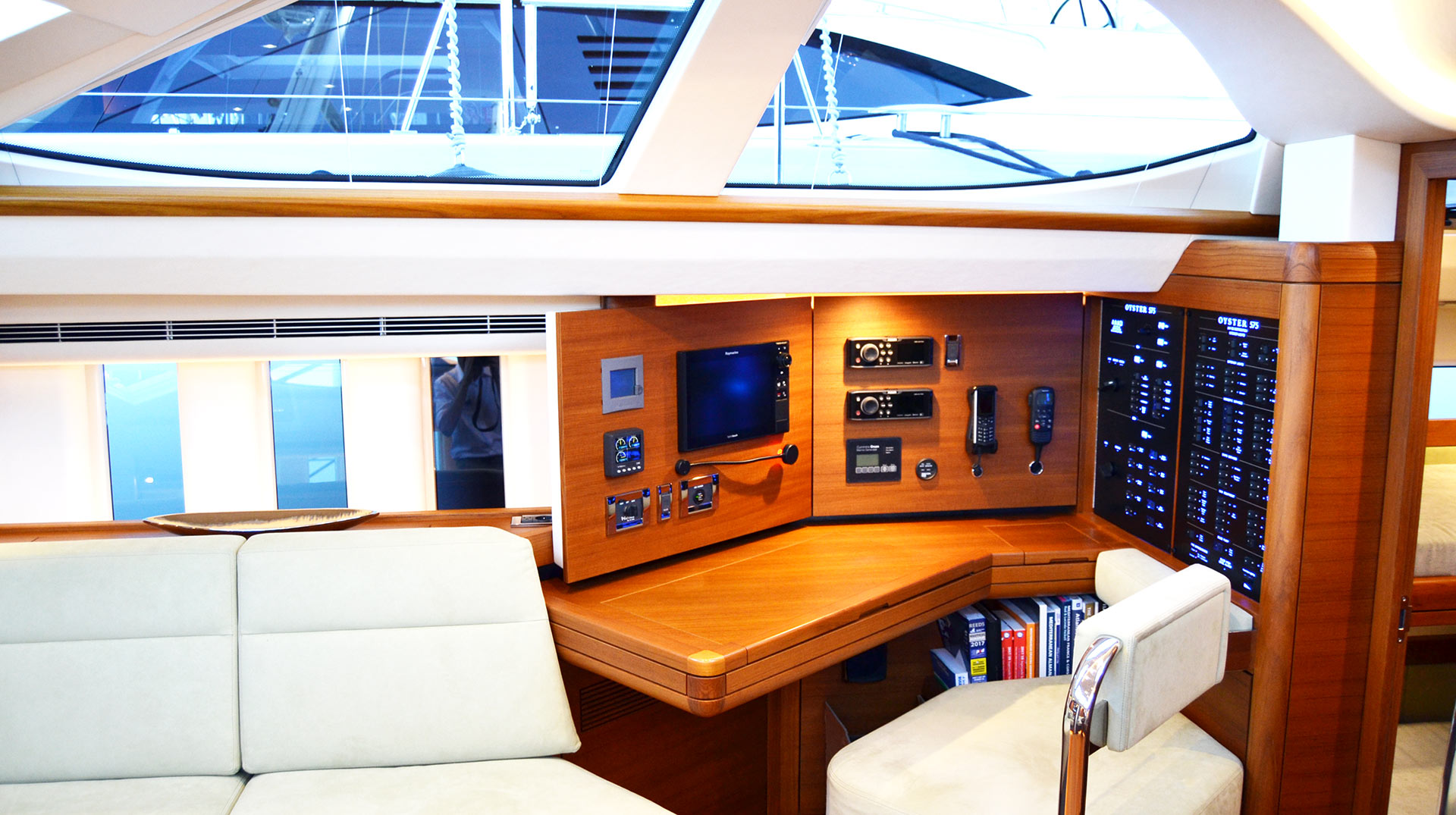
The four step entryway down from the cockpit is not the steepest one but also not the easiest to climb down. I can imagine elderly sailors getting into trouble entering either cockpit or saloon from here, but this is a concession to the deep big saloon, the huge headroom down below deck in every corner and the vast volume of the boat´s interior. The handles of the entryway are made of thick, solid stainless steel adding a modern touch. As do numerous other details in this yacht, which I loved. The Oyster appeals to very wealthy people for sure and I guess these are older sailors – nevertheless, this boat bears such a vital and modern interior design with so many nice details that it almost eppears “young” to me. Bravo, Oyster!

I loved the nav station as you all may know, I am addicted to chart tables and navigation stations . The configuration seen on the Oyster 575 is exemplary and I am sure the nav seat in front of the nicely done chart table would be my favorite place below deck here on the whole yacht! The chart table itself is a bit small for the bigger charts but I guess it´s sufficient for doing a thorough passage planning. All controls and equipment like VHF and stuff can be reached easily by sitting on the modern yet very comfortable nav seat and I just adore the main switch panel on this yacht … it´s simply a dream! But it also reminds me of the huge amount of electric current needed to power up this boat and keeping it running. No “no frills” for sure.
The master cabin on the Oyster 575
Her internal layout is a classic one and no different from other center cockpit yachts: By going aft over port side one first enters the pantry of this yacht. Here the effect of having a comparatively narrow cockpit with also comparatively thick coamings can be observed: The headroom and space available in the pantry is just overwhelming! The pantry is light suffused as the large cat-like windows reach abaft and flood the kitchen with large amounts of natural light. There are numerous fridges and freezers, a four flame stove and a huge working bench for preparing meals.

On the opposite side of the entryway down to the master cabin a lot more stowage, another working bench and lots of cabinets and cupboards. Nevertheless, the available room for standing and working is narrow enough to get oneself wedged and secured when having to cook in heavy seas or when sailing with a more extreme heel. But let´s go through the pantry to see what the master cabin in this yacht can offer.

And that´s – as expected – so much! The large island bed is oversize and again the matrasses seem to be of a special thickness here. I must admit that I am not a friend of island beds as I consider them useless to unsafe in heavy swell – if not fitted with studding sails or other means of preventing people from rolling out and falling to the ground, island beds in the stern as well as in the bow cabins are nice to look at and nice to sleep in when moored but a pain in the ass to use when underway. I gues (I haven´t searched nor asked for) that the Oyster will offer some kind of securing system to make this bed usable in heeled conditions.

Colours, materials and woodworks are again very nicely chosen and done here, everything looks solid and made of special quality. I particularly got fond of one detail here in the back of the yacht: The nice little working place with a table, a cozy seat and some stowage for documents. So in case the big party is going on in the saloon or the visiting mother-in-law is going on your nerves the skipper can lose himself in some work here in the quietness of the master cabin in the back of the yacht. Nice!

Same goes for the front cabin in the Oyster 575 which is also of vast measurements and offers any amenities the high profile sailor is expecting from a yacht worth a minimum of 1.5 million Euros. Although the volume of the front cabin of course cannot compete with the master cabin, there´s more than enough space available here. Even the large island bed at least offers some safety to the side with the hull´s walls in the first half of the bed. I personally would have placed the portholes more to the front here, but that´s only a minor issue. Again, lots of stowage available, lots of light and a nice choice of material, colours and wooden fittings.
Modern yet classic: Material mix on the Oyster
What really struck me all of the time roaming the Oyster 575 was the fact that the designers accomplished something very special with this boat. On the one hand this yacht incarnates the very best of classic blue water passage making in style on a very classic yacht. Her hull design is proven, sleek but classy, her internal layout is proven and classy and therefore this whole composition is very much appealing to somewhat conservative sailors. On the other hand, the choice of material, colours, textures and so, so, so many details on this yacht are tremendously modern!

Just look at the woodworks. We all know that nowadays there are no rounded edges anymore due to the modular production and the fact that manufacturing sharp edges is easier, cheaper and faster. And with the Oyster I am sure that´s no different, but look at the details here – it´s a sharp edged corner in this picture, but they´ve managed to carve out the corner, fit it with nicely sanded beams and achieved a very sleek, clean and modern look. This does not appear to be a sharp corner anymore. I love the quality of the woodworks in the Oyster and really admire the small ideas here and there making the interior of this boat unique, stylish, modern and classy appealing.

The flooring is also very modern: Not the classic Koto style nor a carpet overkill, just lean and sleek floor panels. It creates a warm interior and kind of visually floats into a unified interior design with the other wooden fittings like bulkheads and cupboards. The choice of the flooring timber creates a warm and cozy feeling yet enhances the whole saloon and cabin appearance. The only thing that may be proven is the slip resistance of this floor but that is indeed an issue with all floors on yachts.

As I am right now since months engaged in roofing panel refitting of my own yacht I am especially interested in how this is done on other yachts. The Oyster features a very nicely done roofing configuration with leather-covered panels attached to the coach roof in panels which reach from one ship´s side to the other without a single longitudinal seam. This as well contributes to the larger appearance of the saloon. The panels are fitted with a layer of foam and covered with fine white leather. Again, nothing for the rough round the world trip and dirty fingers, but I guess this is also something this yacht won´t experience in her lifetime though. I love the interior of the Oyster: It´s classy, significant but very modern when you look at the details.
Is the Oyster Yacht the perfect dream blue water yacht?
So, have I been able to get to the bottom of the Oyster cult? Well, I don´t think so because – as everytime when I take a look at a yacht moored to the jetty – one has to sail such a yacht in order to get a feeling for it. But I would say I did get a taste and a feel for this yacht. Sailing on an Oyster on a long haul trip – I mean a 2 or 3 year circumnavigation – is most certainly a true delight. This yacht offers everything you dream of on a boat. Even 2 weeks of the worst rainy, grey, cold weather must be a pure treat if spent in the Oyster.

I guess, part of the Oyster cult is also the perfect marketing and brand image. The Oyster-only rallies all around the world, the very, very high prices of the product and the extraordinary design, choice of materials and the motto “only the best” makes this yacht brand almost a uniquely free standing product in the market. There are only a few other brands in the “production” or semi-one-off branch which are true competitors to that boat. I love her unique style and design, I literally found no spot, even the smallest one, where a worker in the yard did leave a slightly unclean Sika-seam or a screw head slightly off alignment. The Oyster is a perfectly made boat.

The sailor she will suit must be a special one for sure. Not just because of her dizzying price tag – even for the smallest entry-level boat – but also because of her heavy, heavy hull full of amenities and electric stuff. This is also my one and only point of critique: This is by no means a “no frills sailing boat”. You´ll need large amounts of electric current, the constant humming of a generator or going under engine power in order to keep her alive. Don´t ever think of this one situation when electric power supply fails … She probably needs a solid breeze to get going as the Oyster weighs in roughly a ton or more per meter – if going at the end, I am sure she performs well even in heavy water. So, is this the ultimate dream blue water yacht? I leave her fine deck, lock back and smile: She most definitely is. But not for me.
You might also try these articles:
What makes a perfect blue water sailing yacht ? Interview with Head of Trans-Ocean.org.
What makes a good skipper ?
Modern weather routing in planning a sailing trip.
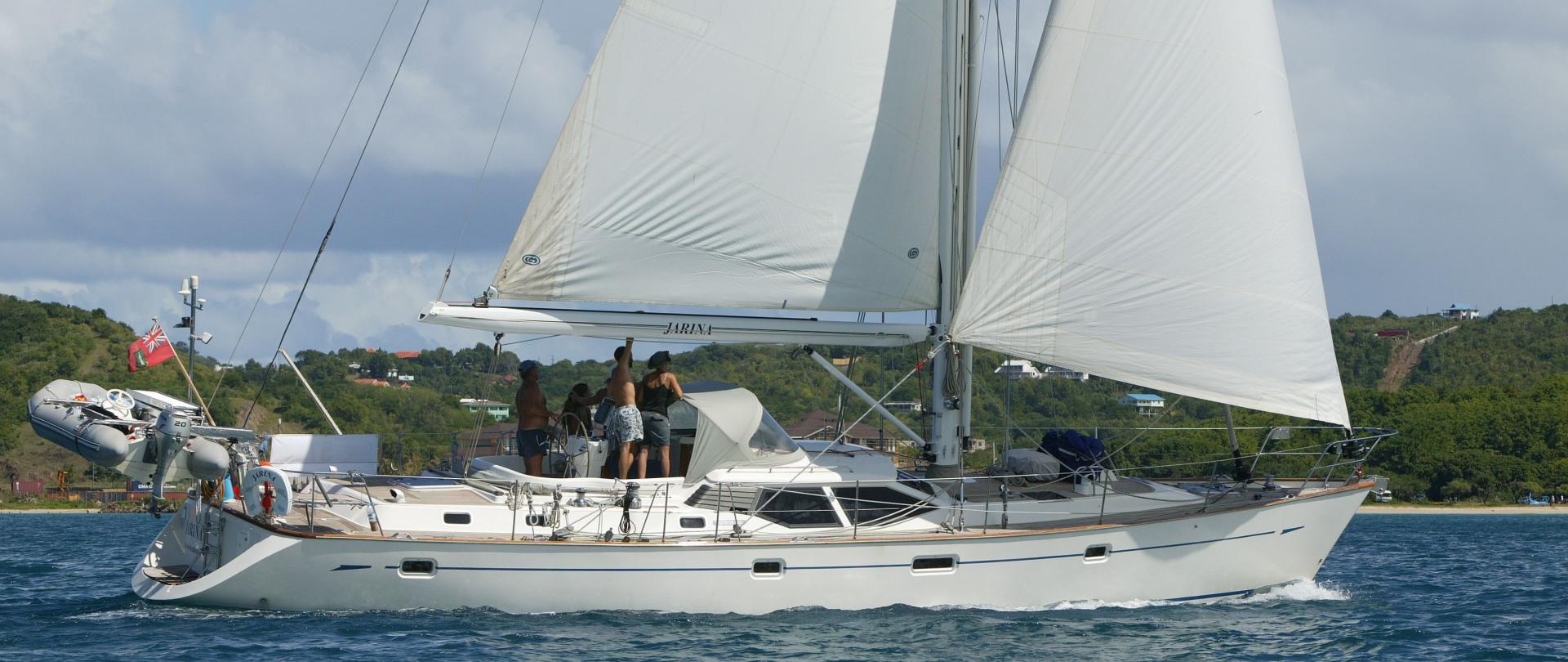
New Listing
$ 299,000 VAT Excluded
IN PICTURES
Jarina image galley
FIND OUT MORE
More information
Floor plans.
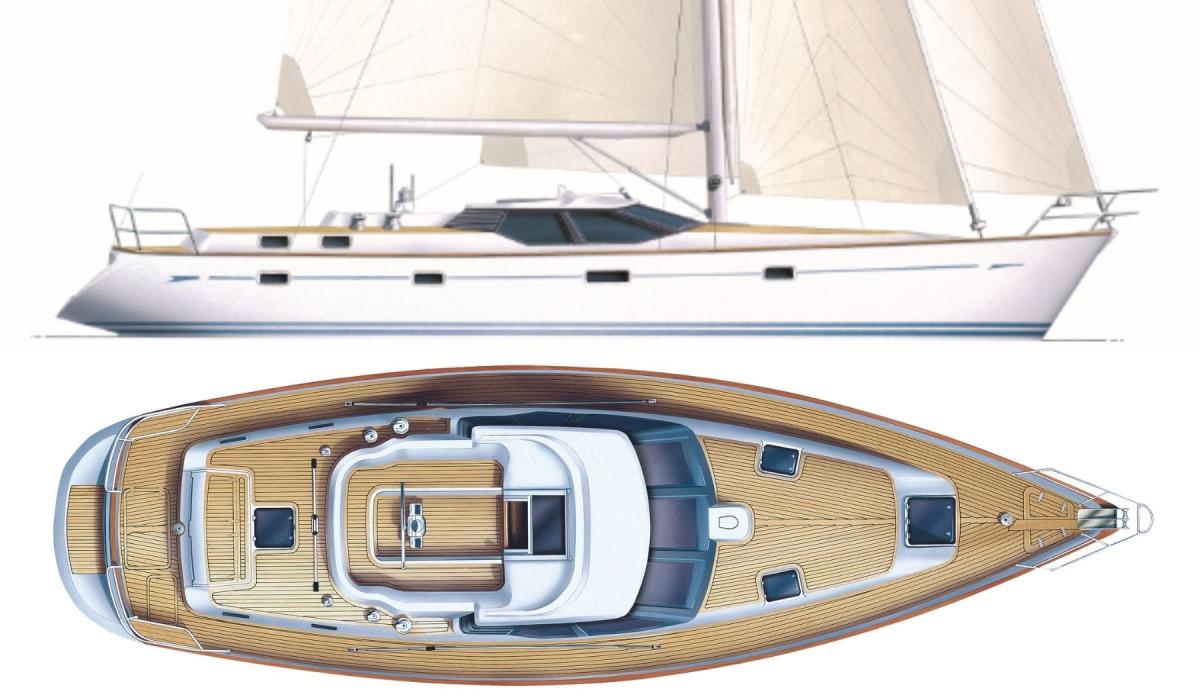
WHAT WE SAY
Broker's comments, oyster brokerage are delighted to announce the listing of oyster 53 jarina..
Spec coming soon!
Contact us now to find out more.
Specification
| HULL NUMBER | 53 / NZ03 / 29 |
| YEAR | 2003 |
| LOA | 16.40m / 53’10” |
| LWL | 13.90m / 45’7” |
| BEAM | 4.66m / 15’3” |
| DRAFT | 2.22m / 7’3” |
| DISPLACEMENT | 22,250kg / 51,257lb |
| RIG | Cutter rig with in-mast furling |
| JOINERY | Teak |
| CABINS | Six berths in three cabins |
| LYING | Saint Lucia |
| STATUS | New listing |
Explore more pre-owned yachts
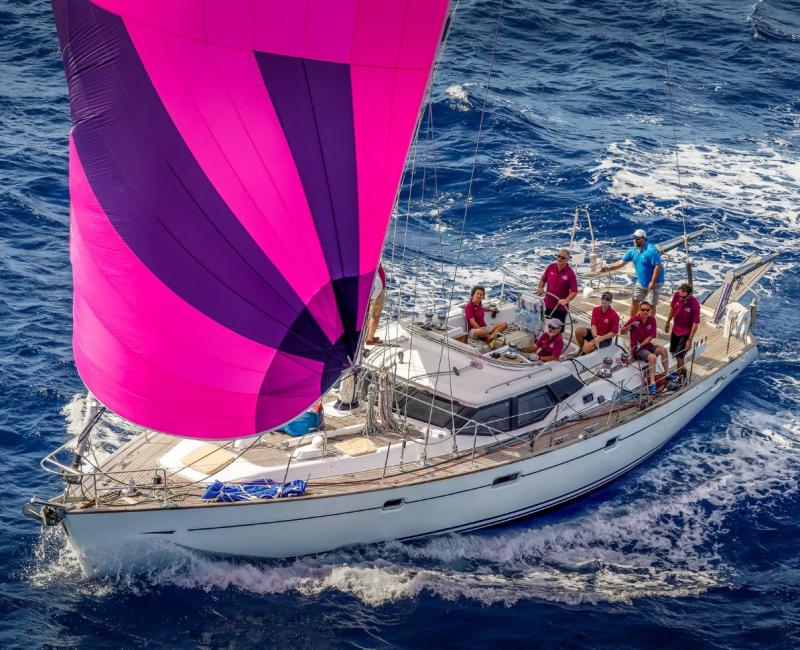
OYSTER 53 - 2003
£ 390,000 VAT Paid
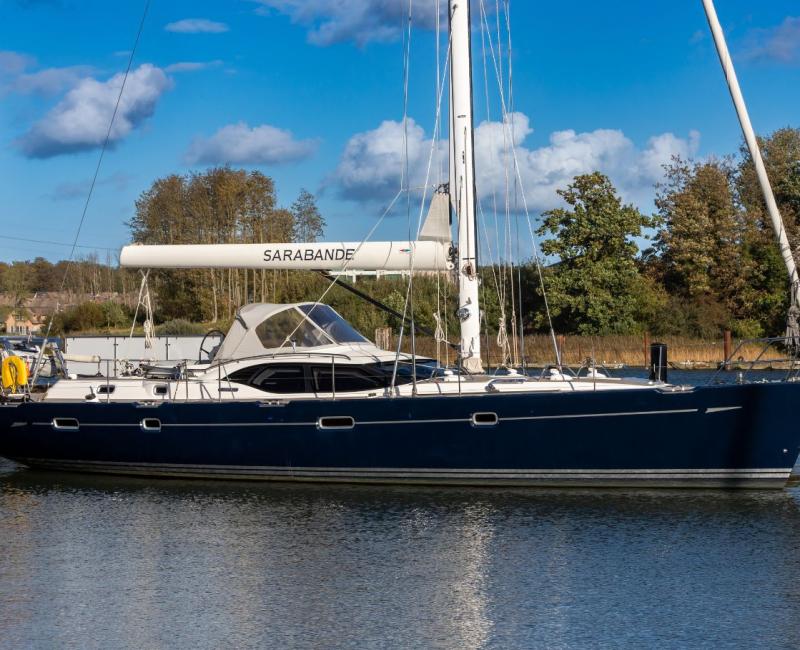
OYSTER 54 - 2010
€ 795,000 VAT Paid
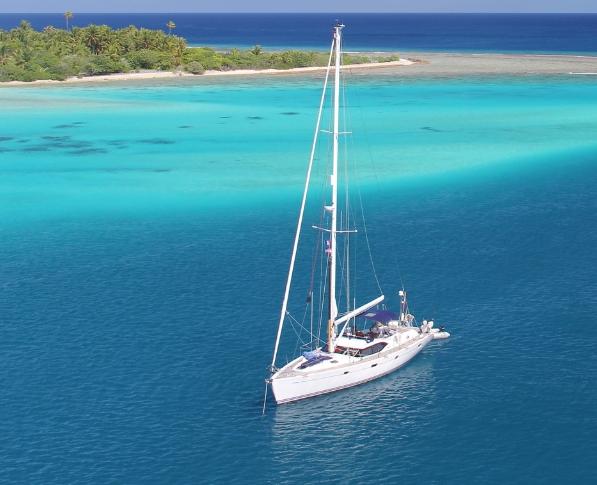
£ 565,000 VAT Excluded
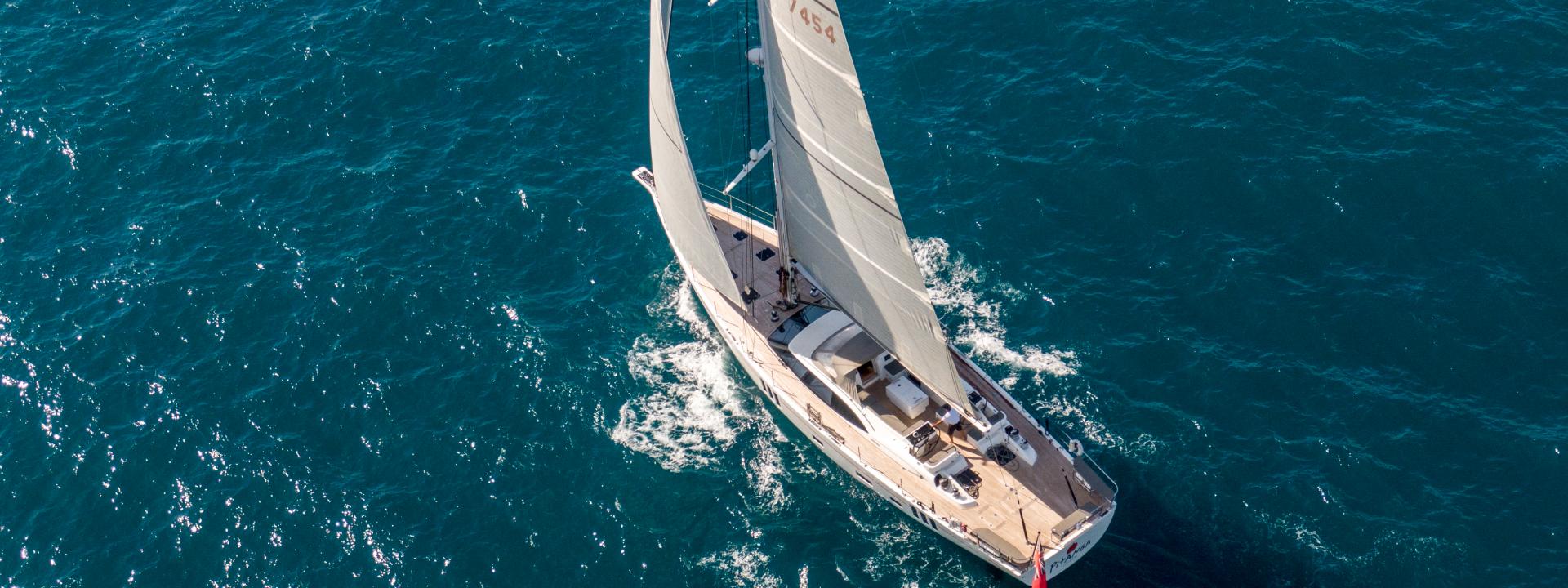
OYSTER HERITAGE
Explore 50 years of leading sailboat design
Sign up to our newsletter
Be the first to hear about new launches, exclusive events and all things Oyster
© 2024 OYSTER YACHTS

OYSTER WORLD RALLY
Entries for the Oyster World Rally 2028-29 are now open. Embark on the sailing adventure of a lifetime
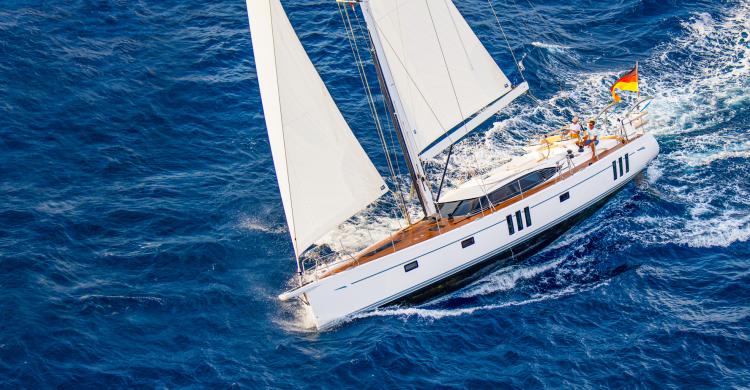
The new 565 Series II
The pursuit of perfection continues
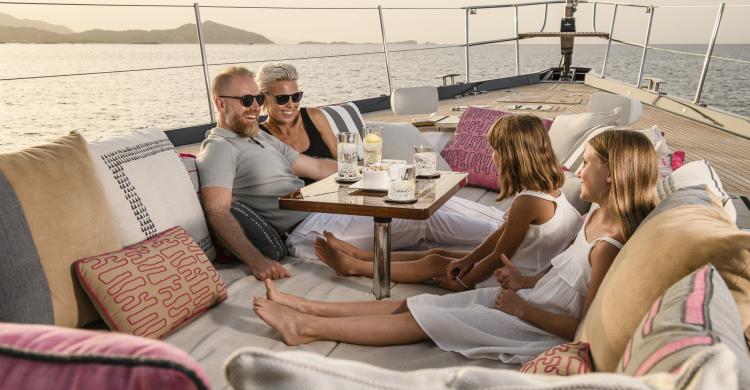
Oyster Charter
Experience exhilarating sailing, luxury and style on an Oyster charter

New 565 Series II
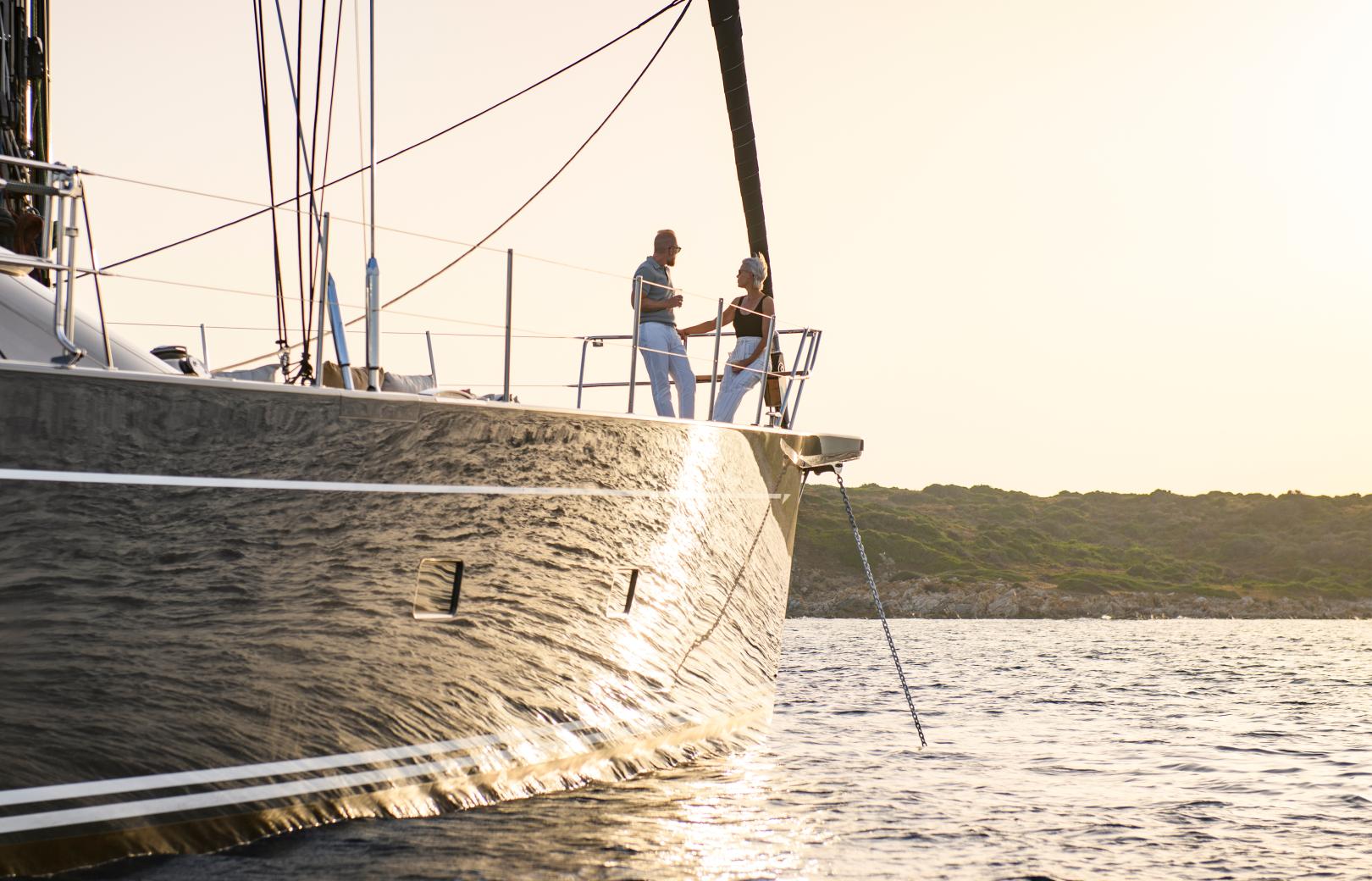
LUXURY CHARTER
Experience exhilarating sailing, luxury and style on an oyster charter. personal, exclusive and uniquely oyster.
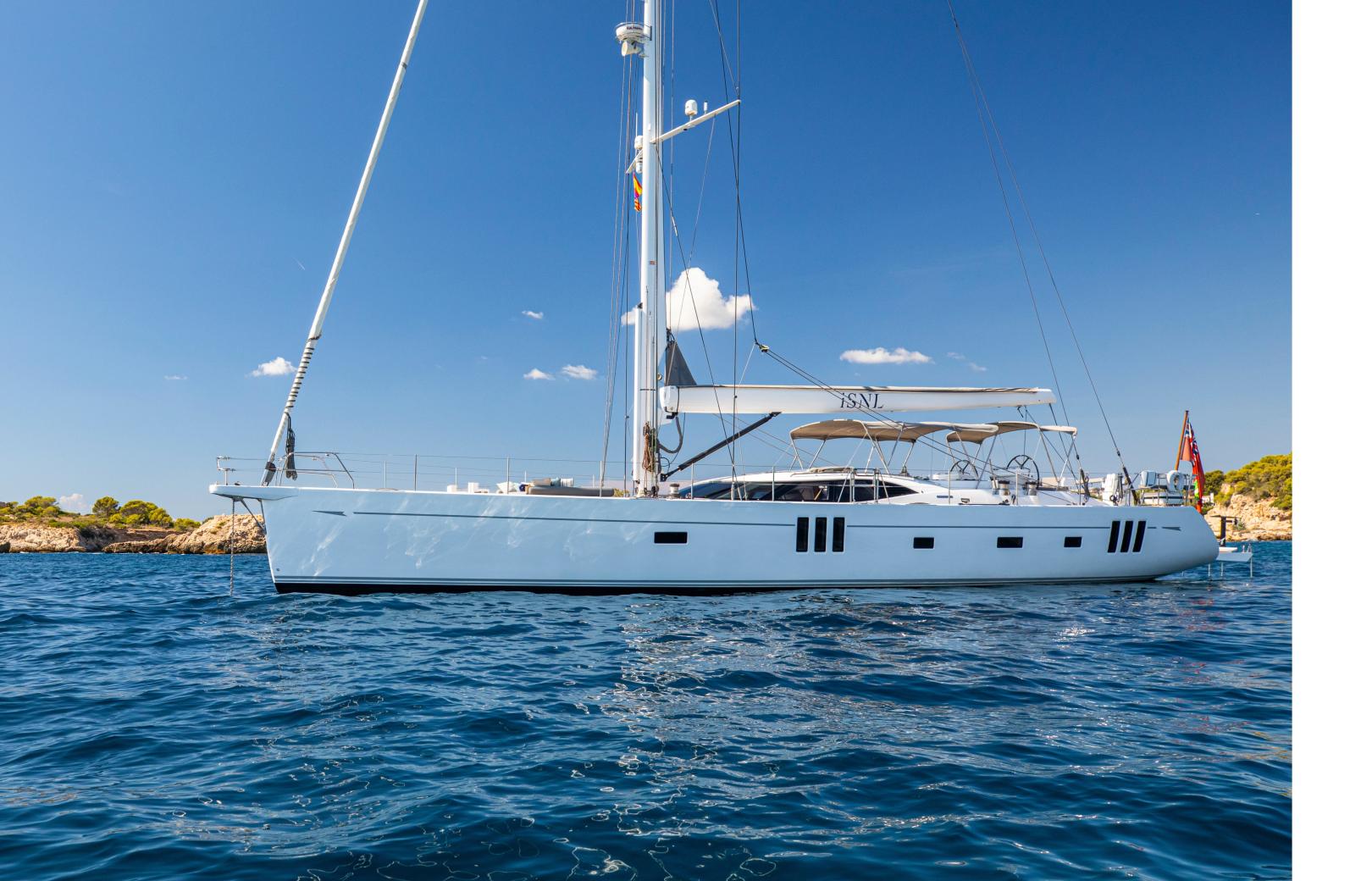
Oyster 825 iSNL
Discover this exceptional late model 825 with a unbeatable spec and a bespoke layout.
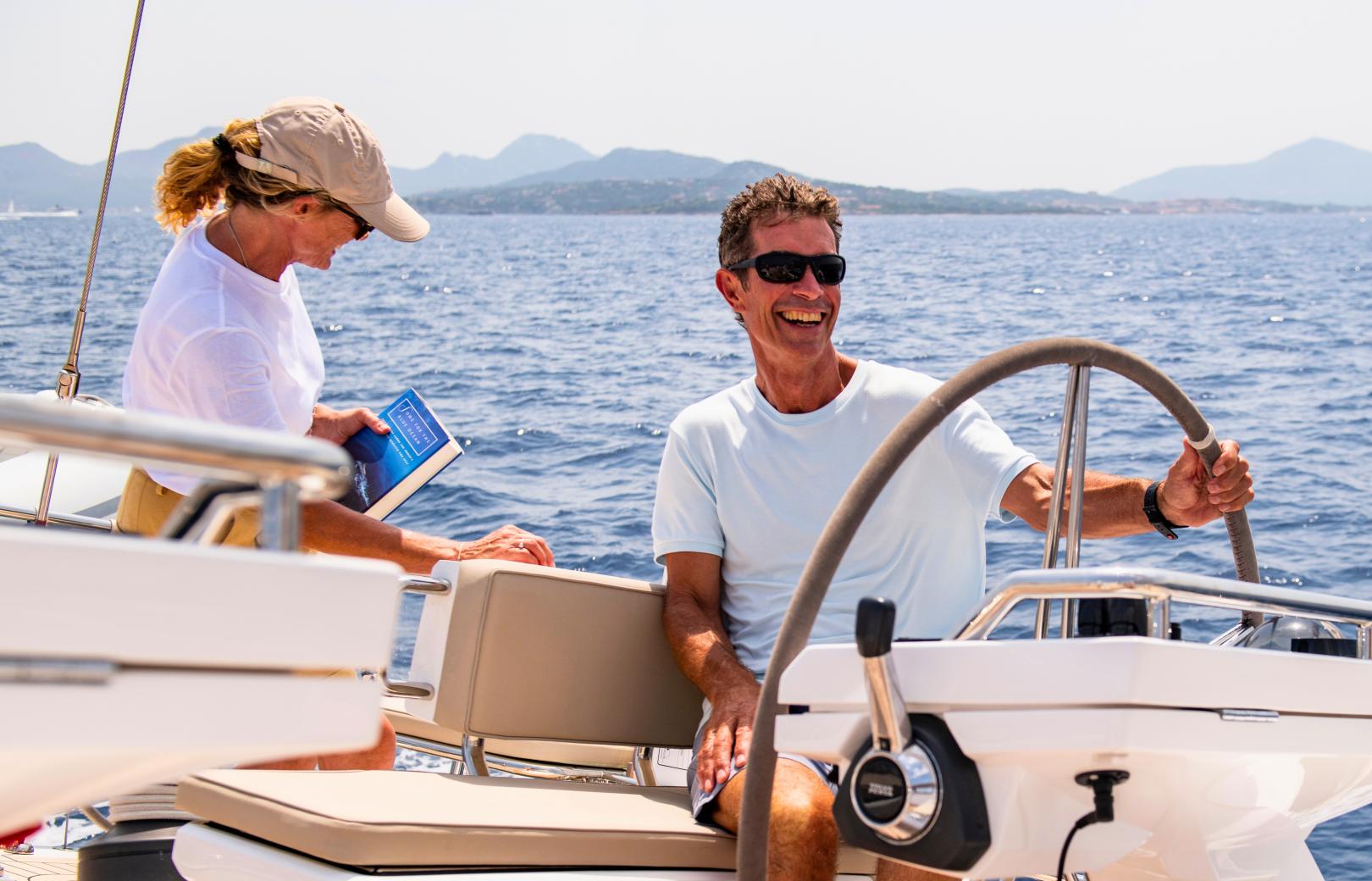
oyster ownership
Personalised care, unforgettable experiences and lifelong yacht support, oyster world rally.
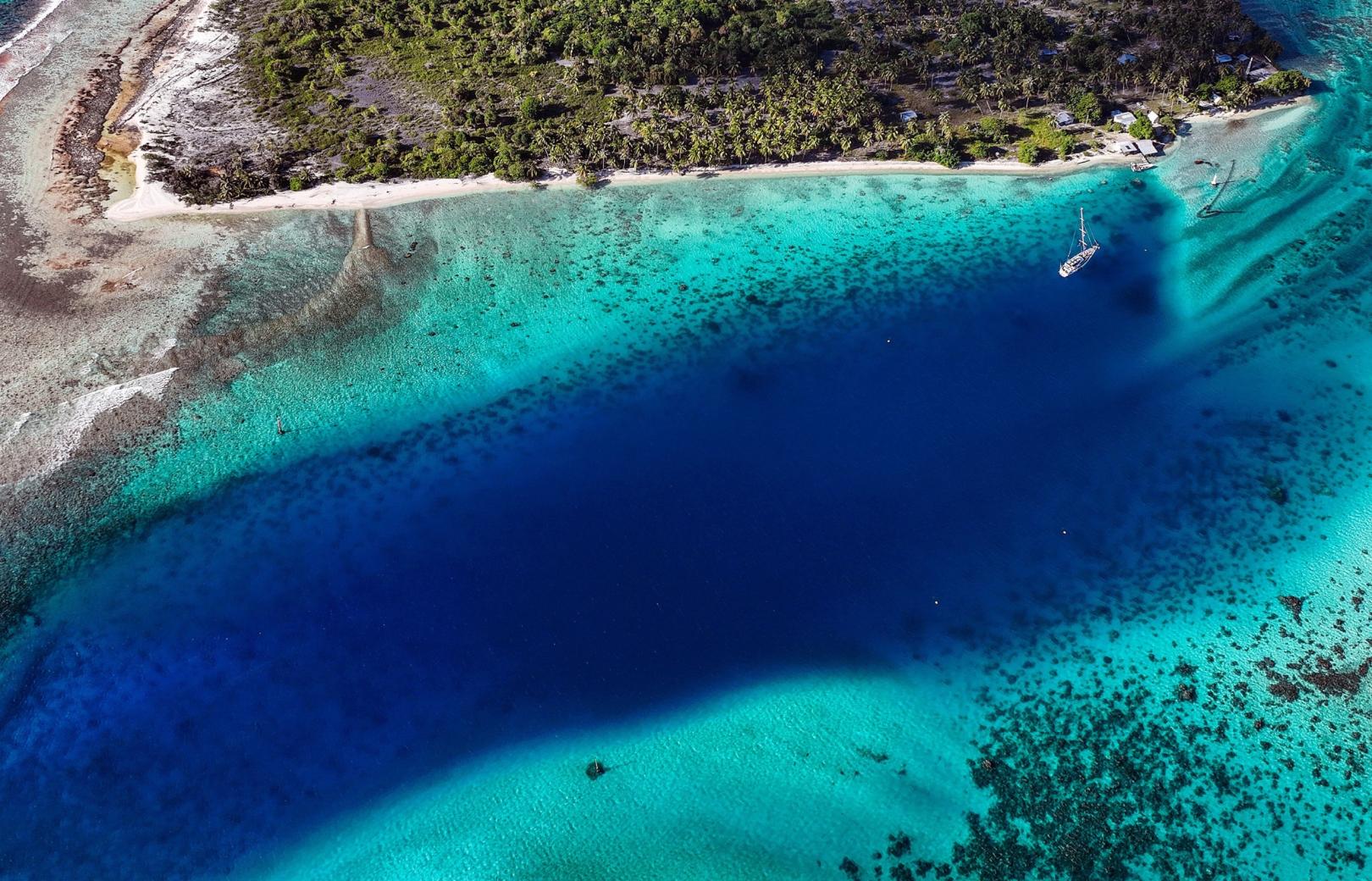
ENTRIES OPEN
Embark on the sailing adventure of a lifetime. entries are now open for the oyster world rally 2028-29.

Follow the Oyster World Rally 2024-25 fleet live
Winner of European Yacht of the Year 2023. She is a new breed of luxury 50 foot yacht, offering effortless shorthanded sailing capability.
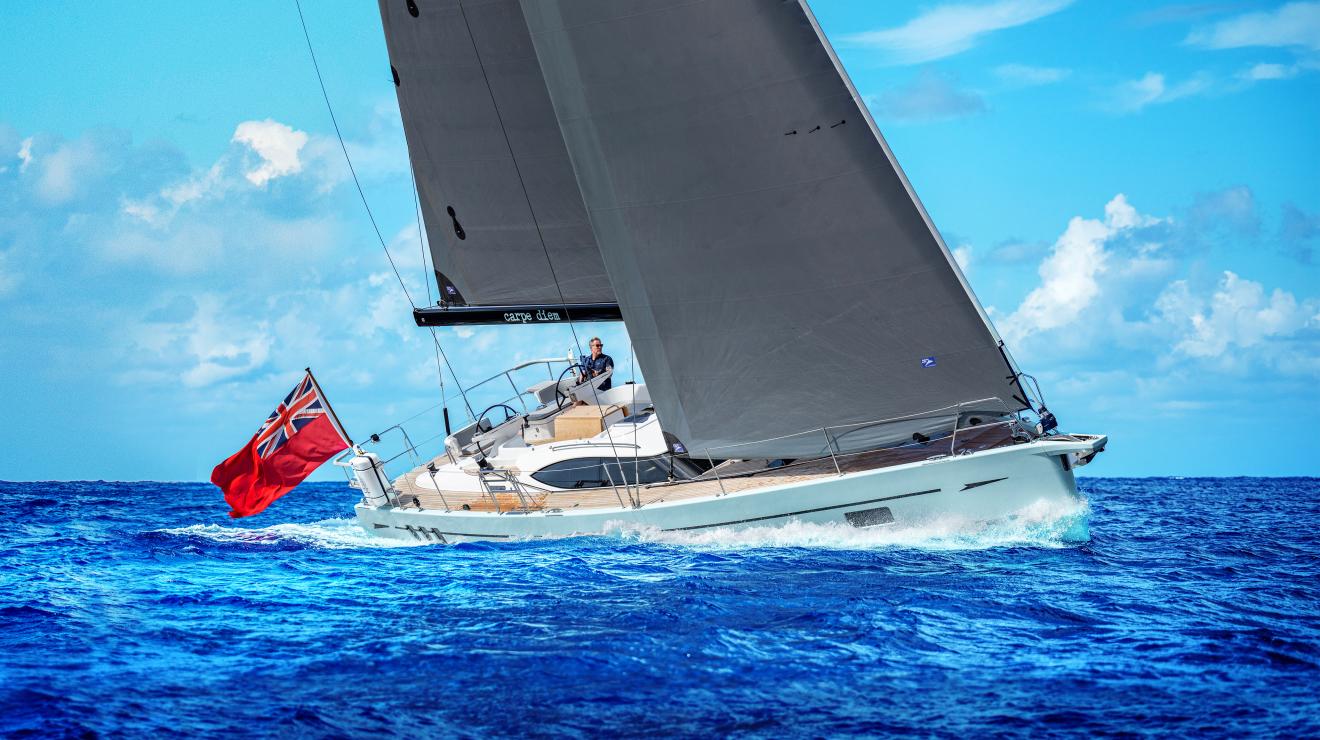
A magnificent, award-winning sub 60 foot sailing yacht, offering luxurious living space and outstanding shorthanded sailing capability.
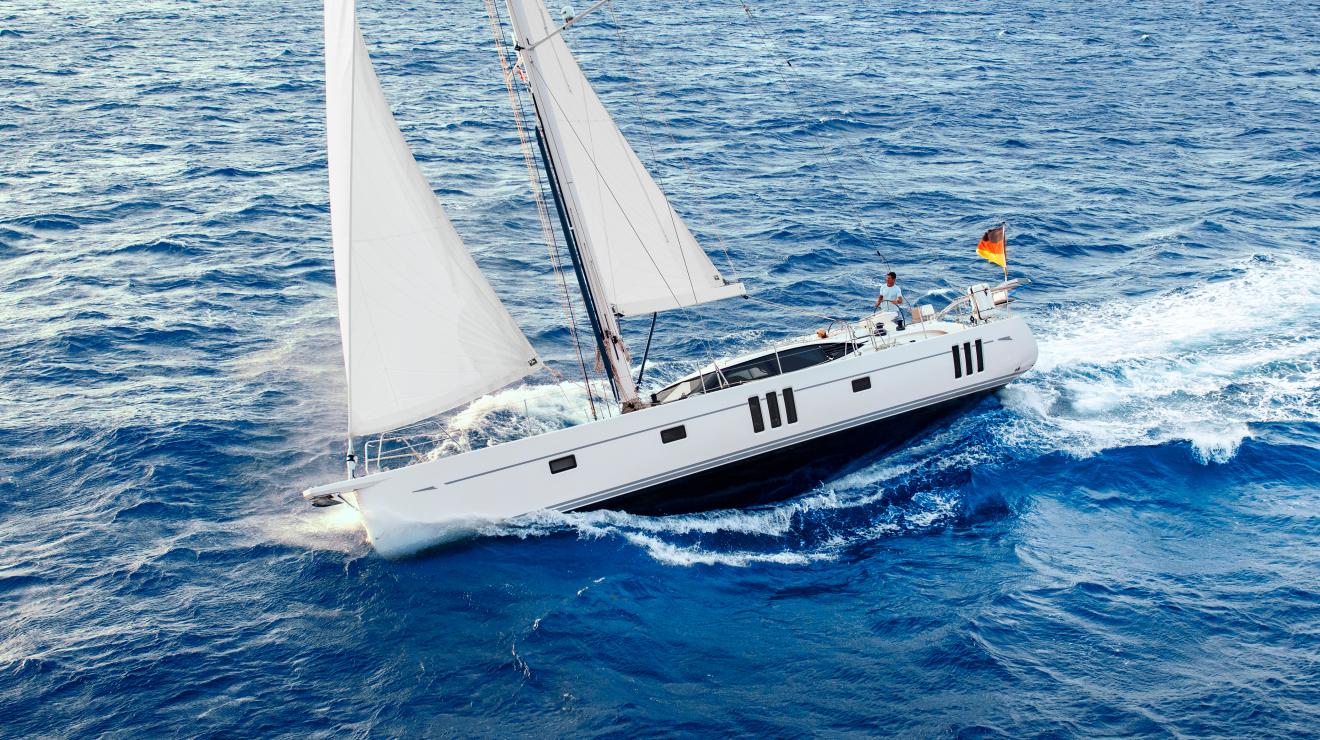
A beautifully proportioned 60 foot, luxury liveaboard bluewater cruiser, offering effortless shorthanded sailing capability.
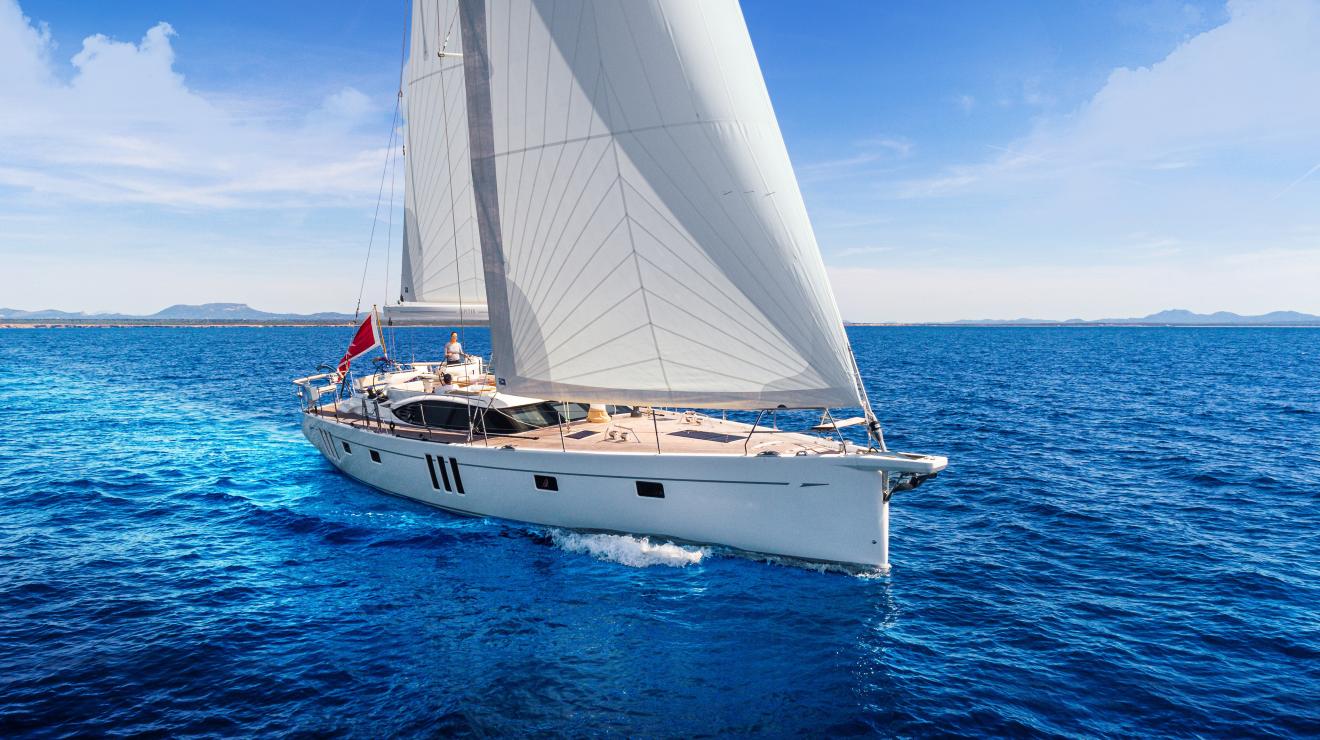
A superb sub 70 foot ocean sailboat offering versatile luxury living space and impeccable sailing performance.
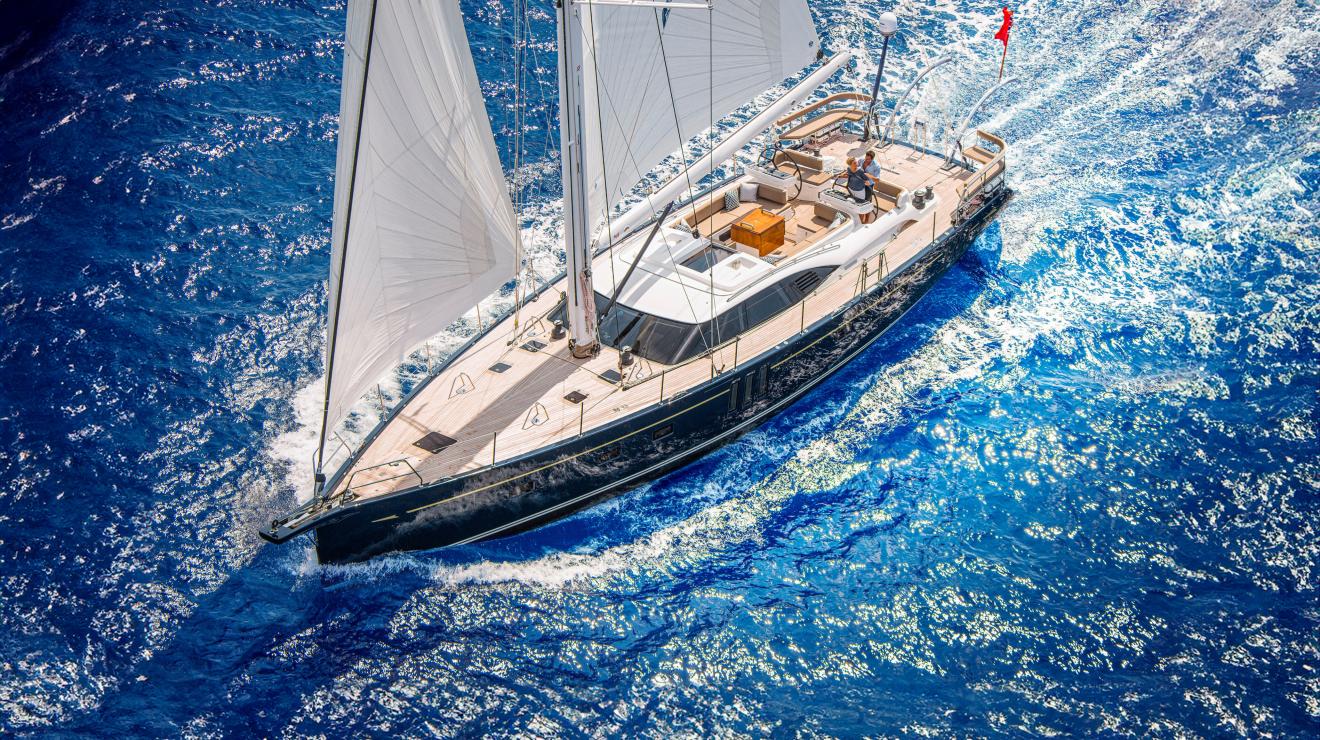
An inspired 75 foot yacht, offering infinite configuration options, generous luxury living space and flexible crew quarters.
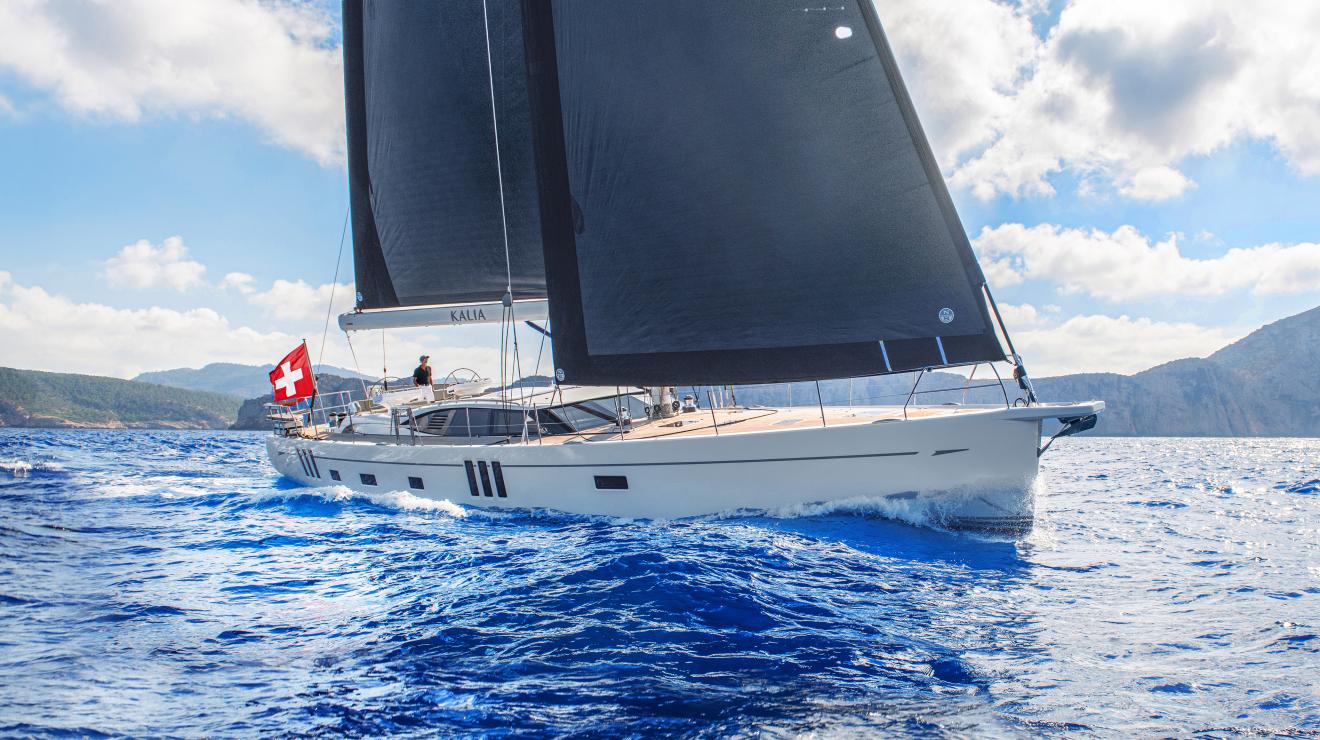
Oyster 885SII
The remarkable, iconic 90 foot sailboat, perfect for relaxed luxury voyages of discovery.
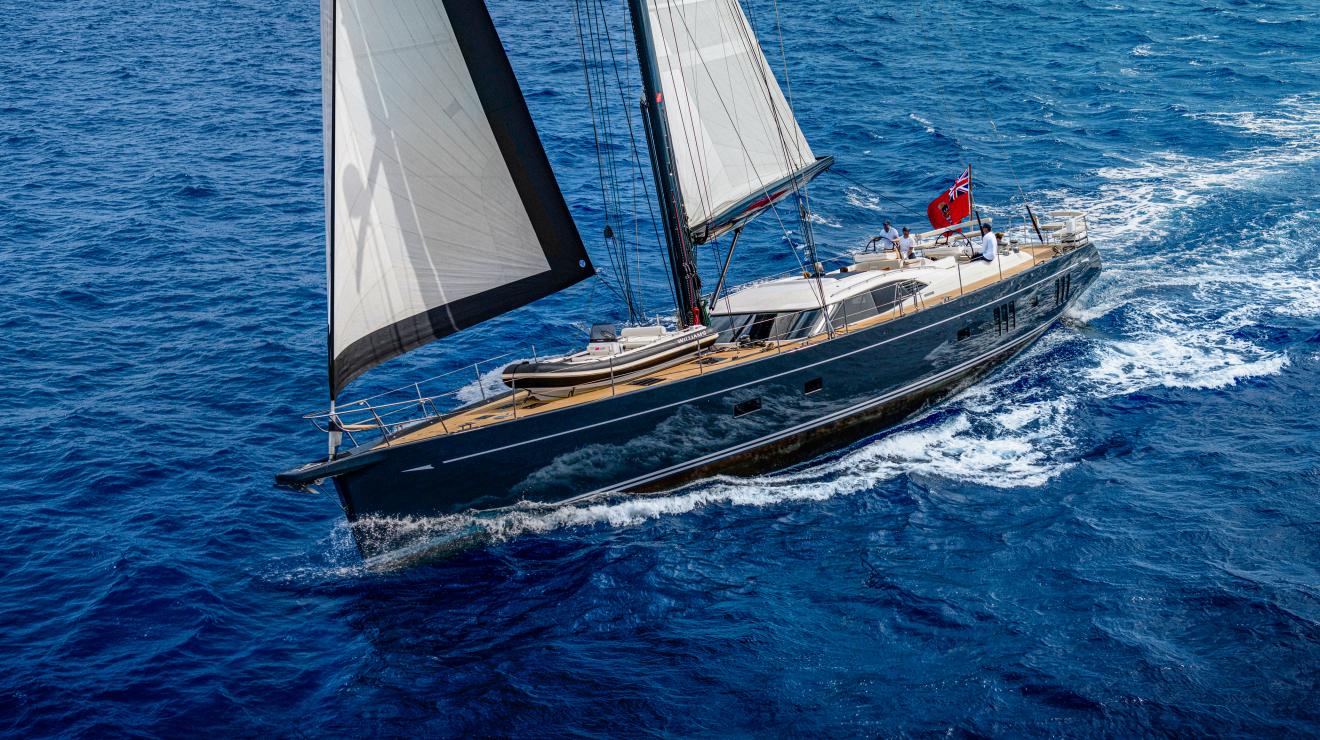
First name *
Last name *
Phone number *
Country/Region *
Attach CV *
Attach covering letter
Current occupation
LinkedIn profile

IMAGES
COMMENTS
The Oyster 565's £1.5m price tag is steep, but it is comparable to similar-sized yachts from competitor brands and, unusually, comes with a very high standard spec. This includes hydraulic ...
Here's Why Oyster Yachts Are Worth Their High Price: Oyster Yachts are the stuff dreams are made of for most blue-water sailors. These yachts are solidly built and beautifully finished and incorporate some of the best modern, innovative marine technologies available.
The Oyster 495 is as much a part of the small superyacht style of Oyster as its last few launches from the Oyster 565 to the Oyster 885, all by Humphreys Yacht Design. First impressions centre on ...
Price as reviewed: £1,600,000.00. TAGS: new boat New Boat Test oyster Yacht review. Following an era which saw Oyster yachts getting progressively bigger and bigger, the iconic British boatbuilder has shifted its gaze back to the sort of boats that made it famous. And the first fruit of this welcome development is the comely Oyster 495.
6. Oyster Yachts If you've been looking for luxury more than anything else, Oyster Yachts provides you with numerous solutions. This British brand is widely known for manufacturing a wide range of luxury cruising sailing yachts.
The Oyster 495 is powered by a 100-hp Yanmar diesel with a saildrive, which Oyster chose over a shaft drive presumably due to the shape of the hull. At 2,300 rpm, we motored at 9.5 knots, and when barely in gear we spun in our own length with just a finger on the light and responsive helm.
Oyster's new 595 has already proven a sales hit, which is hardly surprising - it captures the very essence of a bluewater sailing pearl. As a rule, pulling up the floorboards might not seem an obvious highlight when exploring an AU $5-million, 60-foot sailing yacht but, as a rule, you're probably not on an Oyster. I am, and a highlight it is.
When it comes to series-building large cruisers, Oyster Yachts is the undisputed world leader. The yard's evergreen popularity lies with its bluewater cruisers up to 60ft (Boat test: Oyster 475 ...
March 27, 2015. The Oyster 56 is perhaps best summed up as a quality blue water cruiser that was ahead of its time and combines good sailing characteristics with luxurious accommodation. The Oyster 56 is the company's most popular cruising yacht model to date and is still a great ocean crosser. Key attributes.
Oyster 675 Review. Fresher and sportier in feel, the Oyster 675 is set to be the first of a new line of Oysters. We tested the boat in Palma, Majorca. The latest of Oyster's sixth generation designs to hit the water is a beautifully crafted long-distance yacht with impeccable sailing performance, along with bright, spacious, and thoughtfully ...
Take a look around the Oyster 885. Designed and engineered to deliver exceptional comfort and safety without compromising sailing performance, this 90ft luxu...
Oyster is a thoroughbred British luxury sailing yacht builder. We have designed, built and supported the world's finest liveaboard sailboats since 1973. Our sailing yachts are a platform to adventure on which lifelong memories are made. This is why, on an Oyster sail yacht, the possibilities are limitless, the destination anywhere.
In 50 years, Oyster has come a long way and taken advantage of design and technology advances to the benefit of all, but many values remain the same as they did when the company was founded, and for good reason. Building yachts that are safe, secure, robust, easily handled and exquisitely finished were among the goals from the start.
In the ranks of dream bluewater cruisers, Oyster is right up there. The 56 is the British yard's most popular boat; small enough to be handled by two people, big enough to cross an ocean quickly and comfortably, yet not so large or complex as to need a full-time pro crew.
Eighty per cent of the last 300 Oyster owners agree. After all, the world is your oyster - and the Oyster 825 is a real pearl. First published in the August 2015 edition of Boat International. The 24 metre Maegan from Britain's Oyster Yachts is a true sailor's boat, customised the way you want it and cruised for a long, enjoyable time.
Oyster Yachts (formerly Oyster Marine) is a British brand of luxury cruising sailing yachts established in 1973. The company is based in Southampton but with foundation and ongoing strong links to Wroxham and Ipswich.
On the Oyster yacht this design feature surely is her large, nicely carved and well-designed big deck saloon windows and the large three vertical porthole windows in the hull. It is the most recognizable Oyster design feature whatsoever - and "my" 575 also bears these. The three vertical portholes are a signature of Oyster yachts.
The Oyster 495, European Yacht of the Year 2023. A new breed of 50 foot sailing yacht, delivering bluewater sailing performance, luxurious living space for six guest and shallow-draft keel option.
Oyster's bluewater sailboats open up the world to sailing enthusiasts, providing endless unique experiences. Discover more about Oyster's luxury sailboats today.
The Oyster 745 is a long range 75 foot yacht. This offshore sailboat offers generous luxurious living space for ten guests, flexible crew quarters, excellent sailing performance and a shallow-draft keel option.
We are delighted to announce the bluewater cruiser Oyster 53 Jarina is now for sale. Yachts Charter Brokerage Ownership Rally Live. New Listing. JARINA. OYSTER 53. ... Oyster 495. Winner of European Yacht of the Year 2023. She is a new breed of luxury 50 foot yacht, offering effortless shorthanded sailing capability.